June 4, 2023
Martha O'Kennon
So, I started last week's blog with a complaint about freeze warnings. Now we're lucky to get through a day that doesn't
go into the 80's or 90's F. Let's see, the big news is that the American Toads have sort of made themselves a male colony,
but hold that thought, please. The Cranes-Bill Geraniums seem to survive among the other weedy stuff. Wasps still visit the Raspberry
blossoms. and my favorite: Somehow the Canadian Columbine has survived to bloom for the first time in centuries and in a new place.

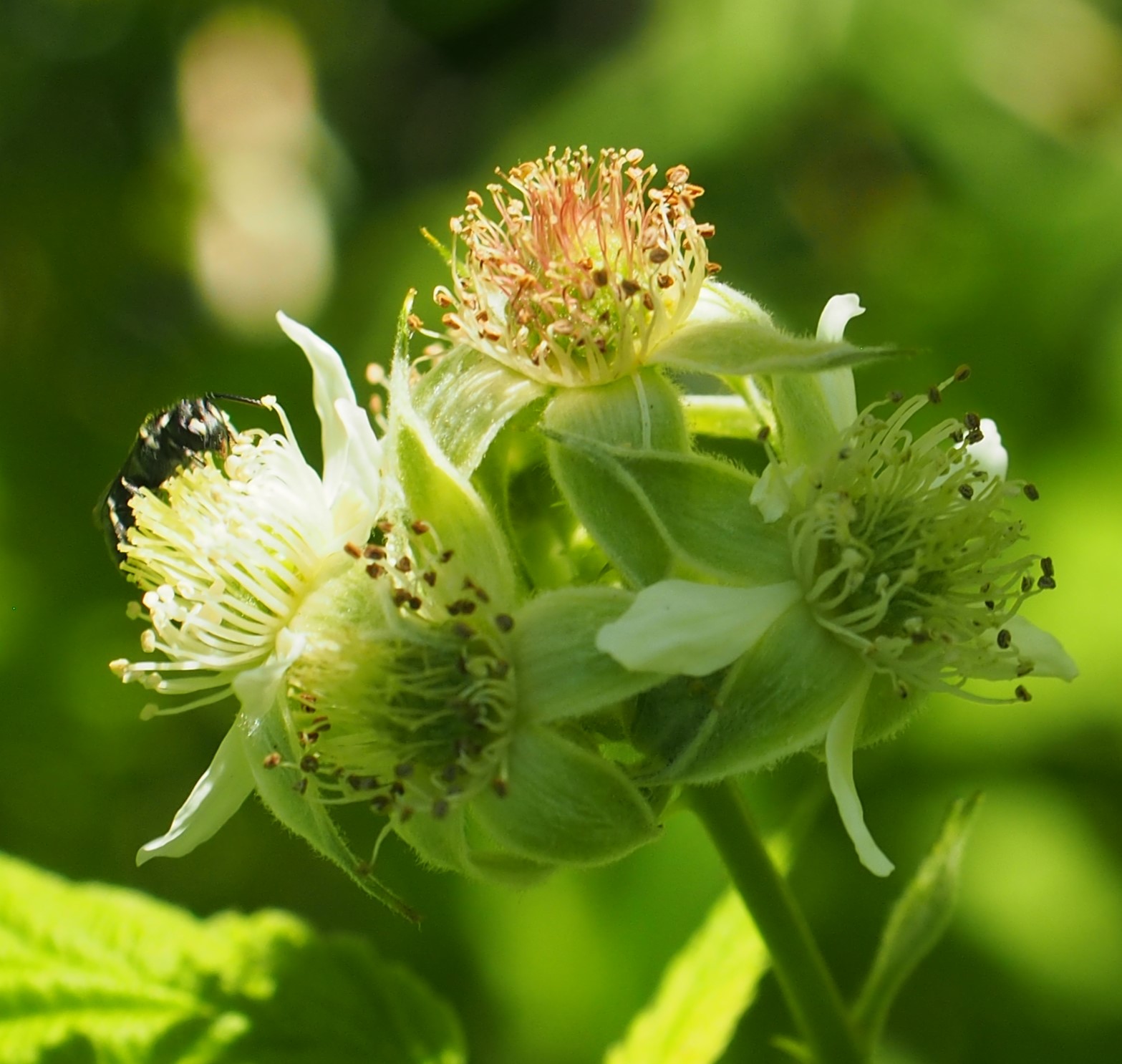
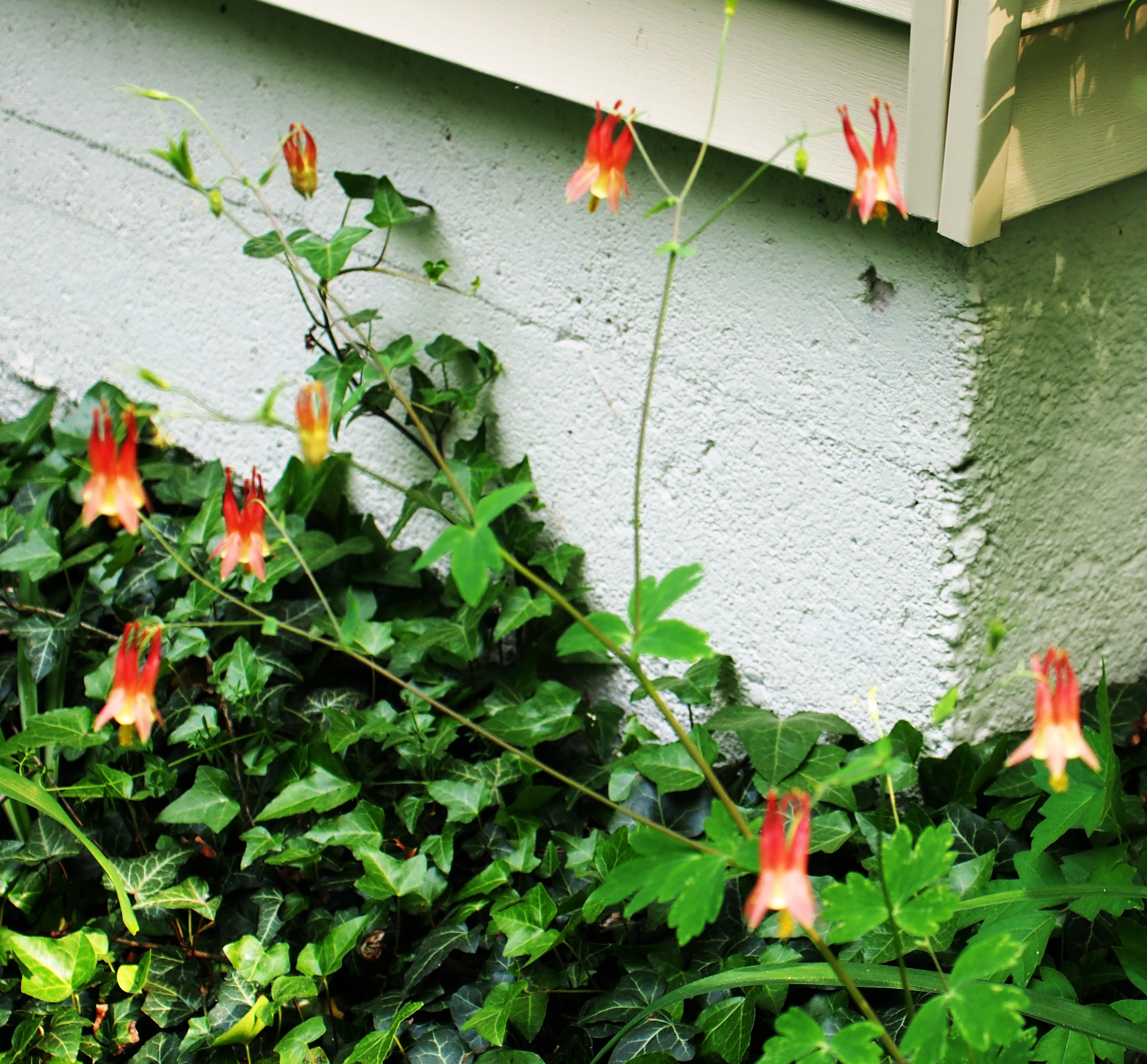
The Ants seem to be mostly Carpenters, like this first one, but I'd just as soon show them by where they like to be. Many of them are found on a few
Peony flowers. Picture 3 shows a Peony opening where a day or two ago an ant such as number 2 was busily opening the seam.
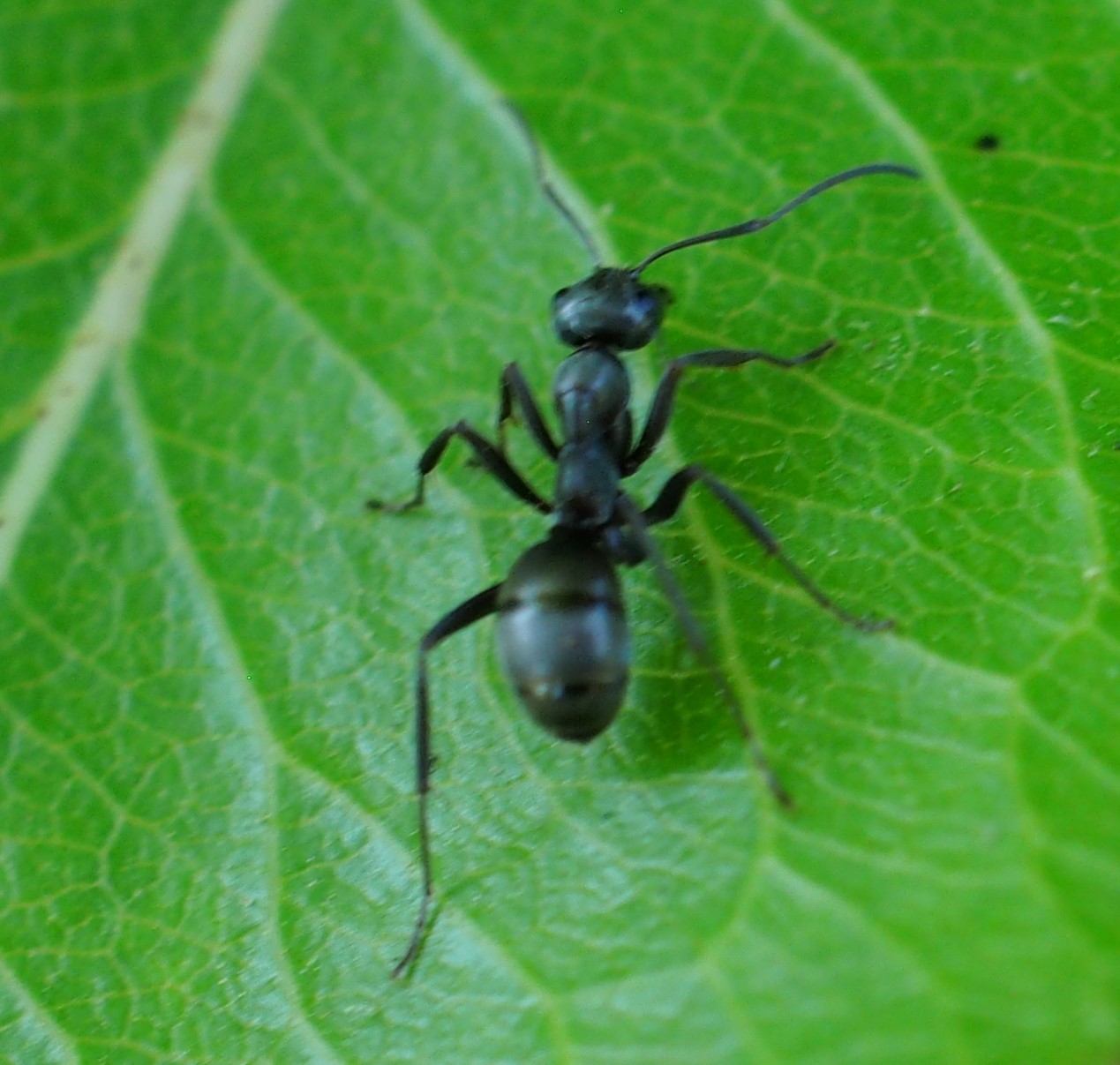
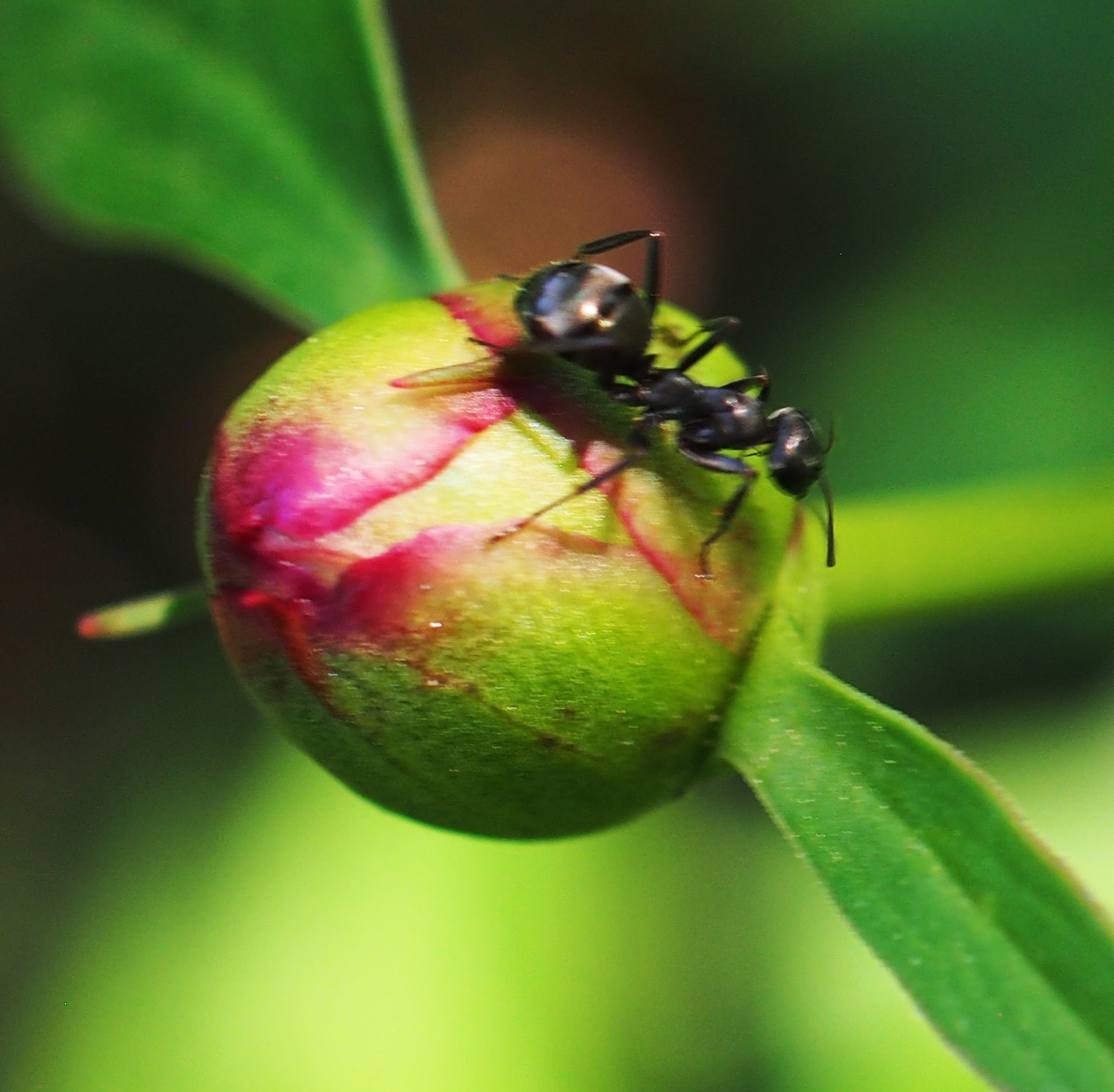
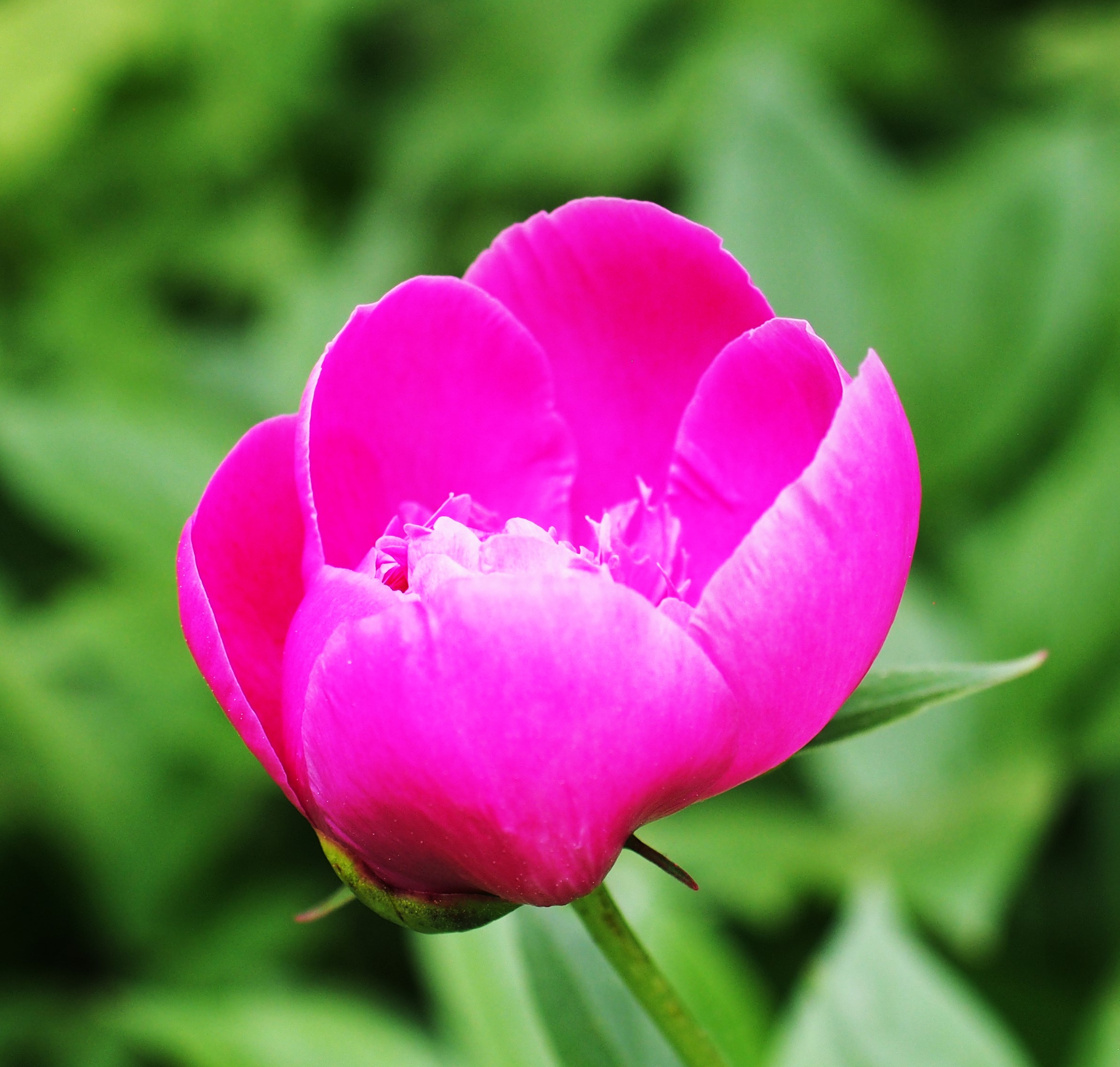
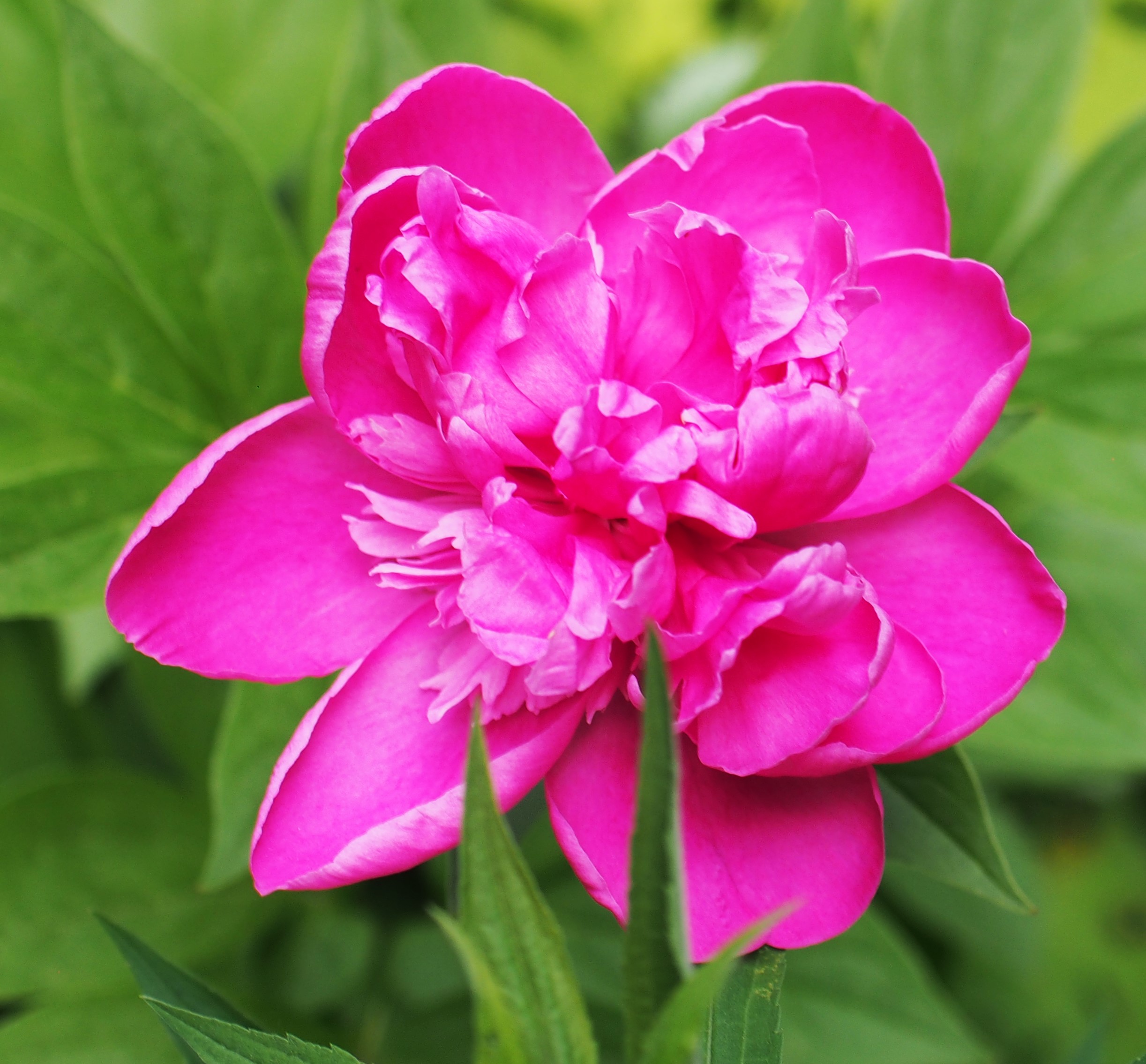
Remember that there is information in the name of the file for each image. You can see it by mousing over the image - look at the lower left of the screen. Or you can
click on the image to get to the (usually) larger image. Then the info is displayed in the address line above. Sometimes the second click will actually display a different view of the
original image.
Since this is the first week in which we saw more than one kind of Aphid, they wanted to go alphabetically. This is a big event for me, since I've been mourning all the Aphid-eating creatures managed to do in the last colony I allowed to build up in a stand of Goldenrod, which is what I believe this plant is. Unfortunately, one of those aphid-eaters is a Lacewing larva, and it has managed to find its way back to the Aphids.
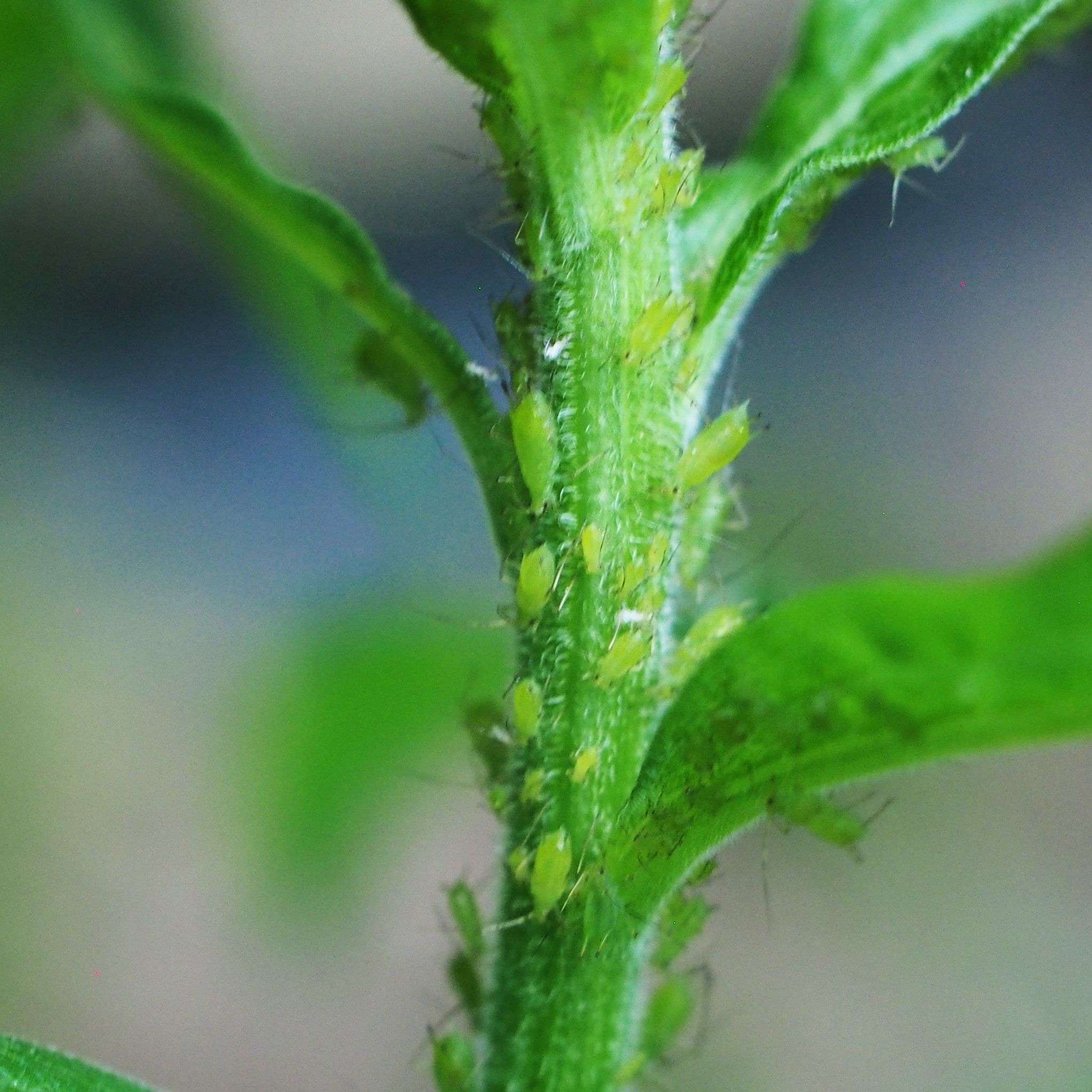
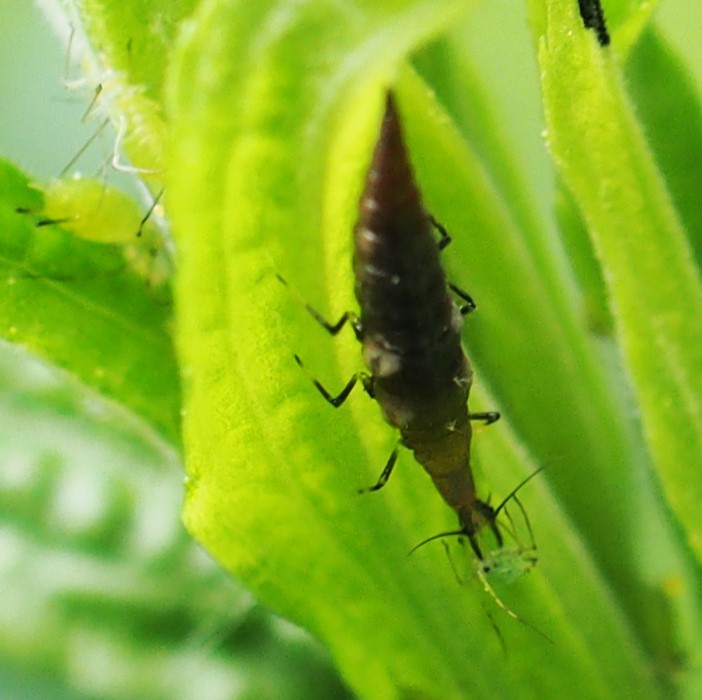
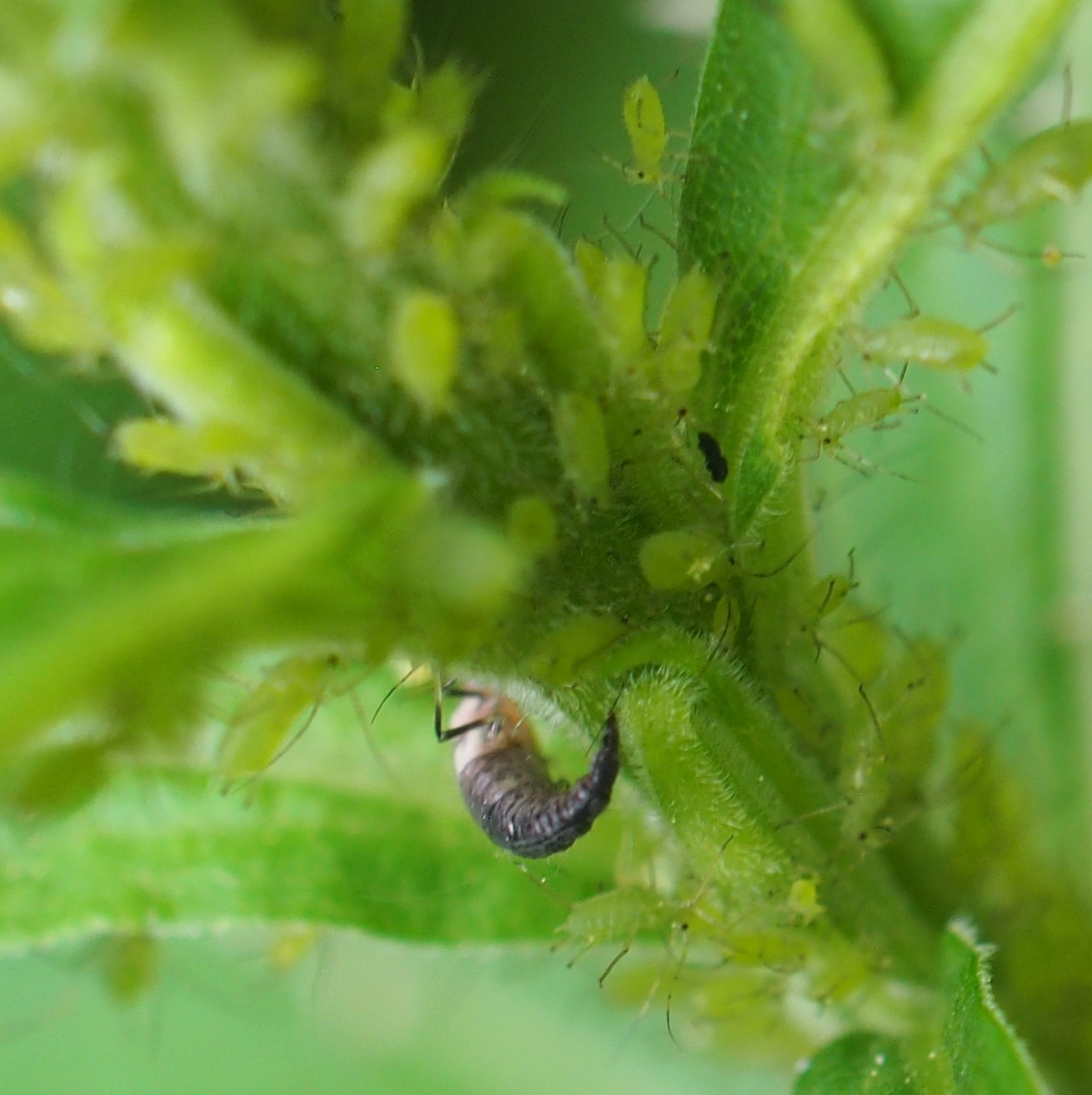
So if you want to root for the good (which) side, please do so. But if it isn't the Aphids, which is my choice, please say so very softly. Meanwhile, I spotted one of those little blue
flying Aphids that I used to catch and taste. This was only worth a tongue-tang of sweet liquid. Anyway, one of them actually landed and let me photograph it (pictures 1 and 2). I'm
assuming that this is what we used to call a Woolly Aphid. I still need to send it in.
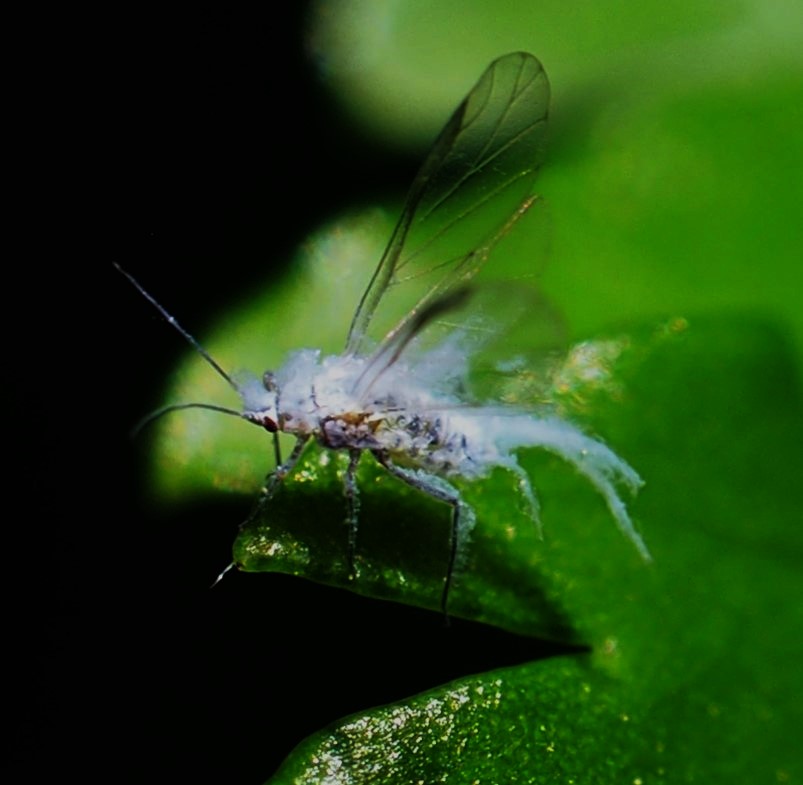

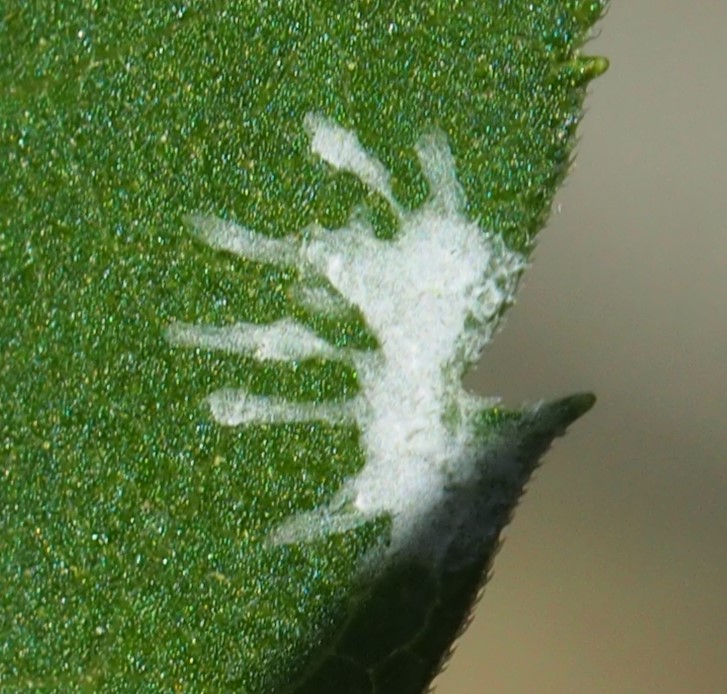
What a lovely week the Beetles had! This Eurasian Red-and-black Melyrid had its grand opening on May 28th!
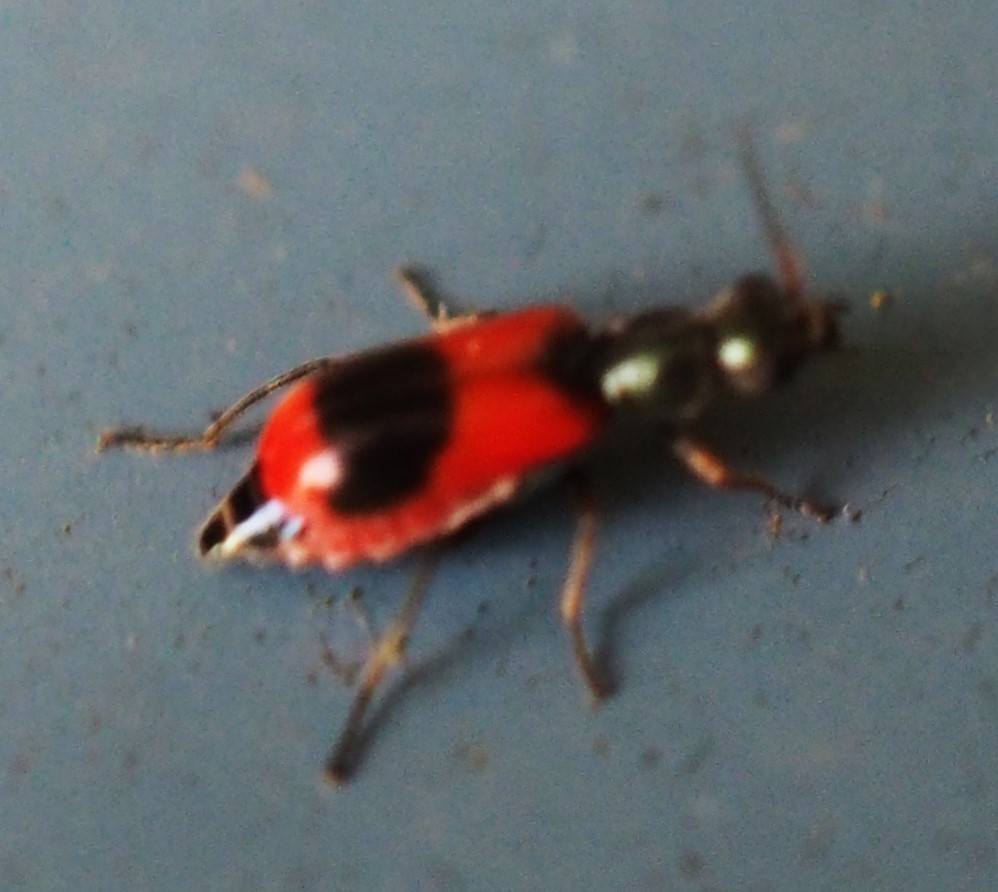

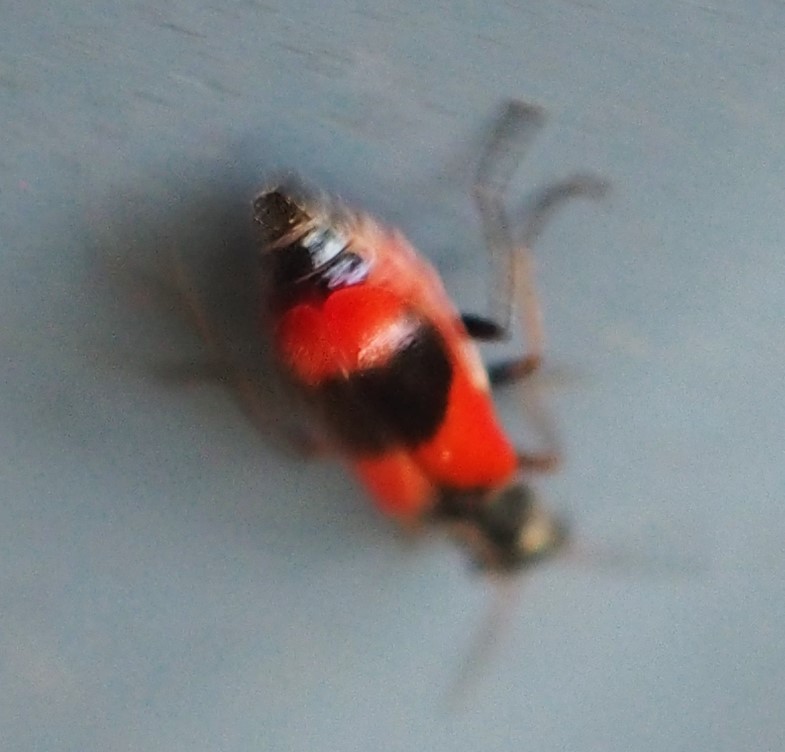
The Goutweed is blooming, and that always means a visit from the tiny Carpet Beetles. This one is, I believe, one of the Varied Carpet Beetles.
Second is a Beetle? Looks like one, but what's that stinger at its rear? Next year, remind me to note if the Green Immigrant Leaf Weevils come
out the same time as the Goutweed!
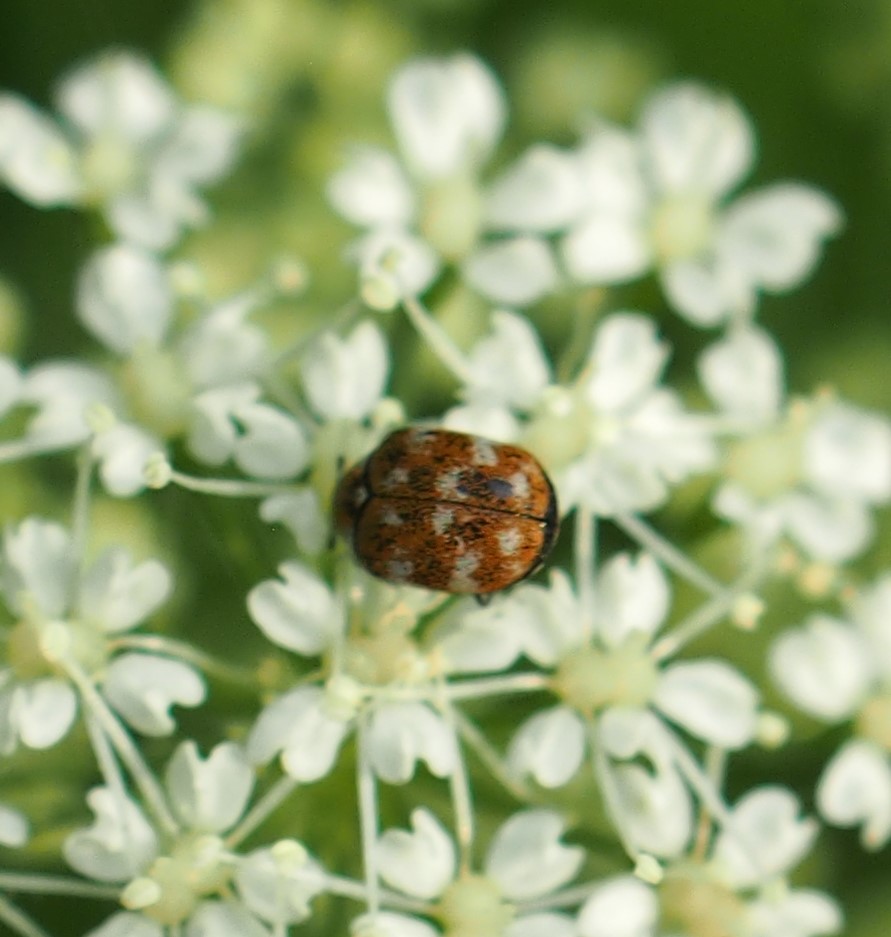
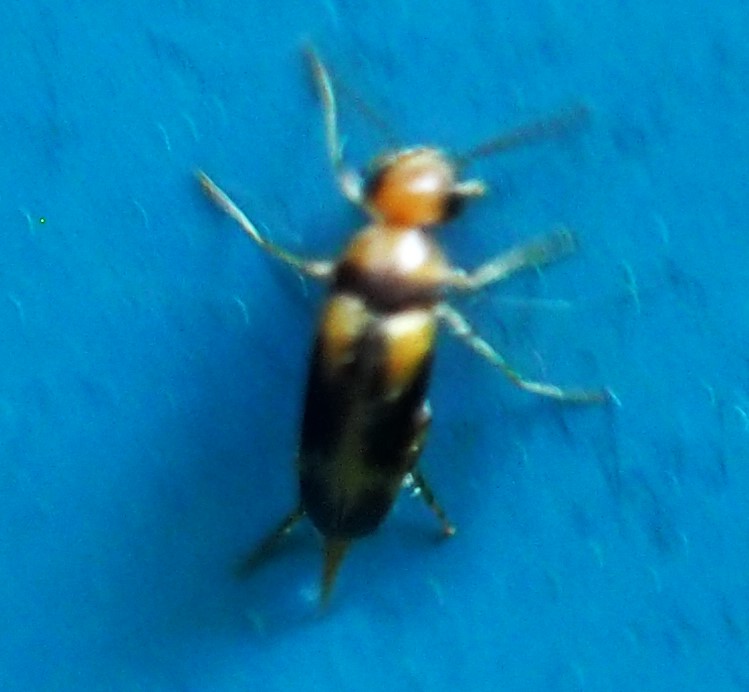

There were a couple of other Beetles. First is from genus Paria, that's all I know. Another new one is this mostly red one in picture 2. And third, a
picture of some kind of tiny beetles mating in a Lily leaf.
.jpg)

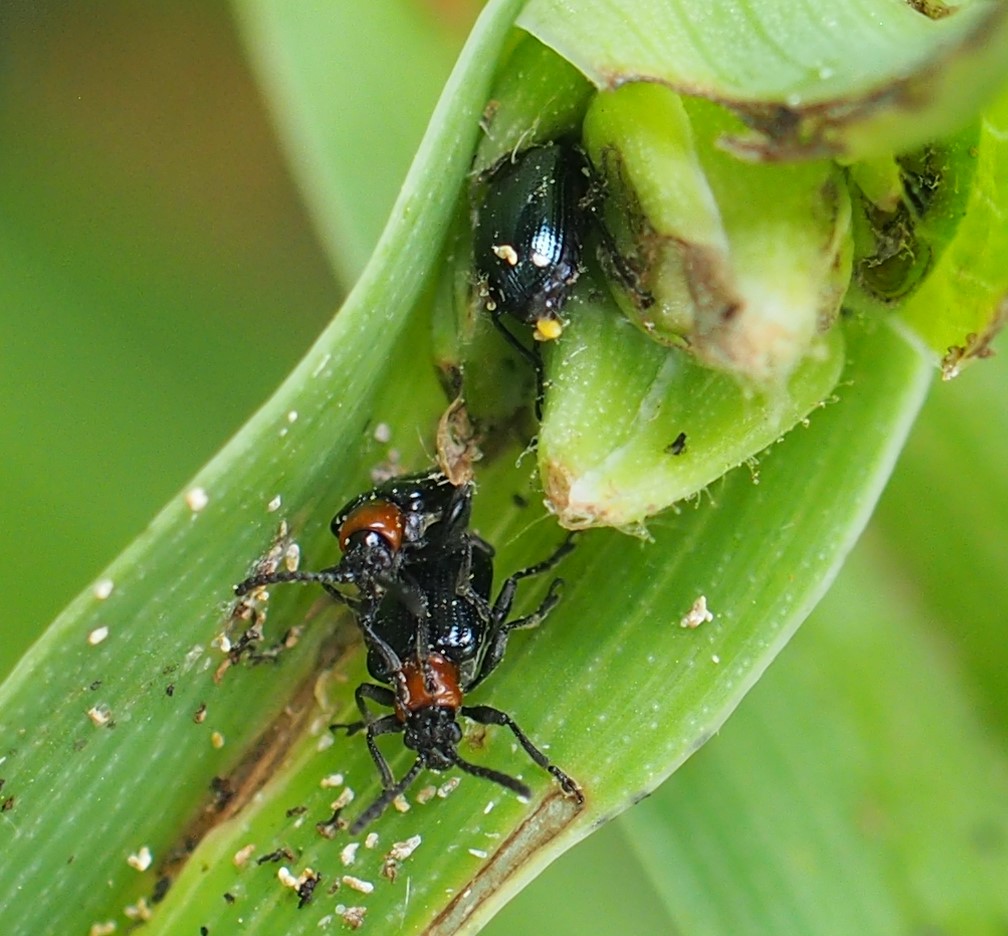
There was one extra Beetle on June 2 that reappeared on June 3. Actually it looks as if it might be in genus Xyleborus, like this one from May 22. Note the first Beetle hasn't completely folded its wings back in.
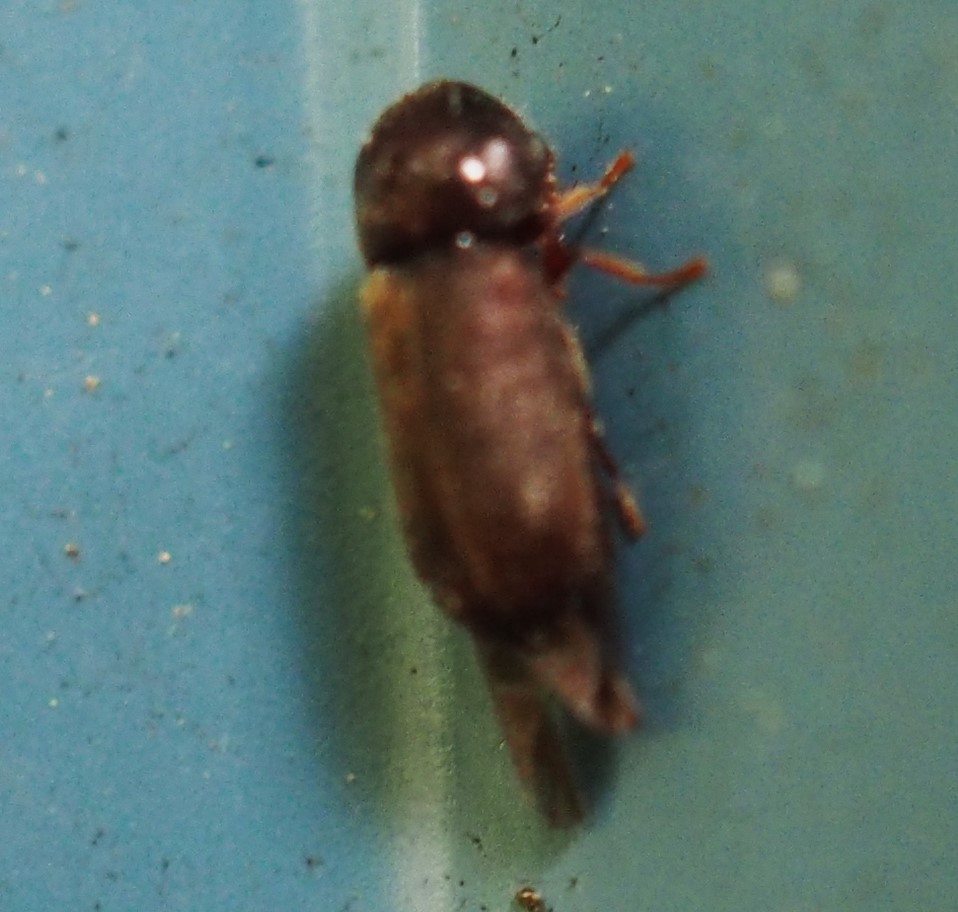
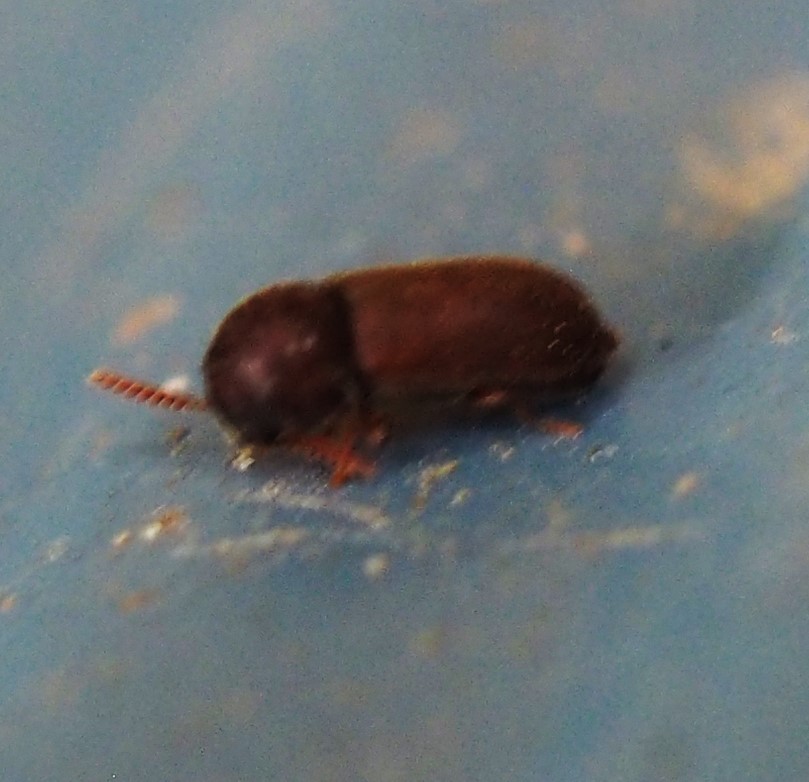
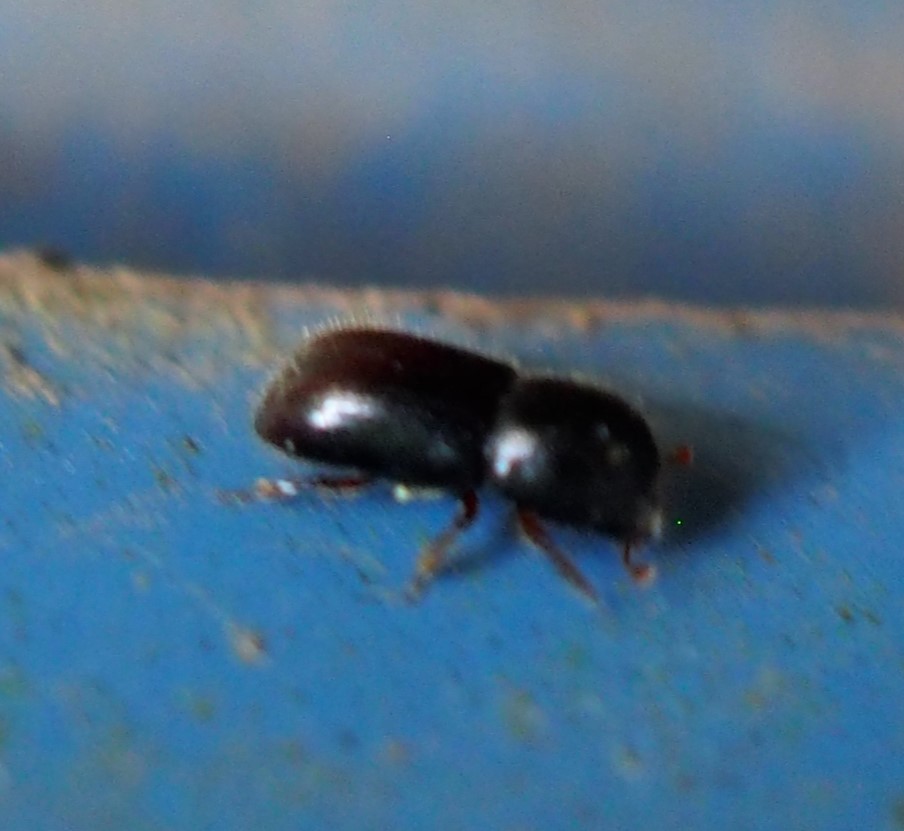
First is a very young Assassin Bug, this time Zelus Tetracanthus, as you can tell by the not-red eye color. Next is an adult Z. luridus. This,
after last week's bumper crop of Assassins, may not be very satisfying, but just imagine the ones that cleverly evaded my eye. So we can end the
last frame with the first (and maybe only) Leafhopper of the week. I believe it is Agallia quadripunctata (this last bit means four-spotted if You
didn't already know that). Fourth: Here are two solid white (translucent) Leafhoppers. I'm waiting to hear from iNat what possible genus they may be in.
.
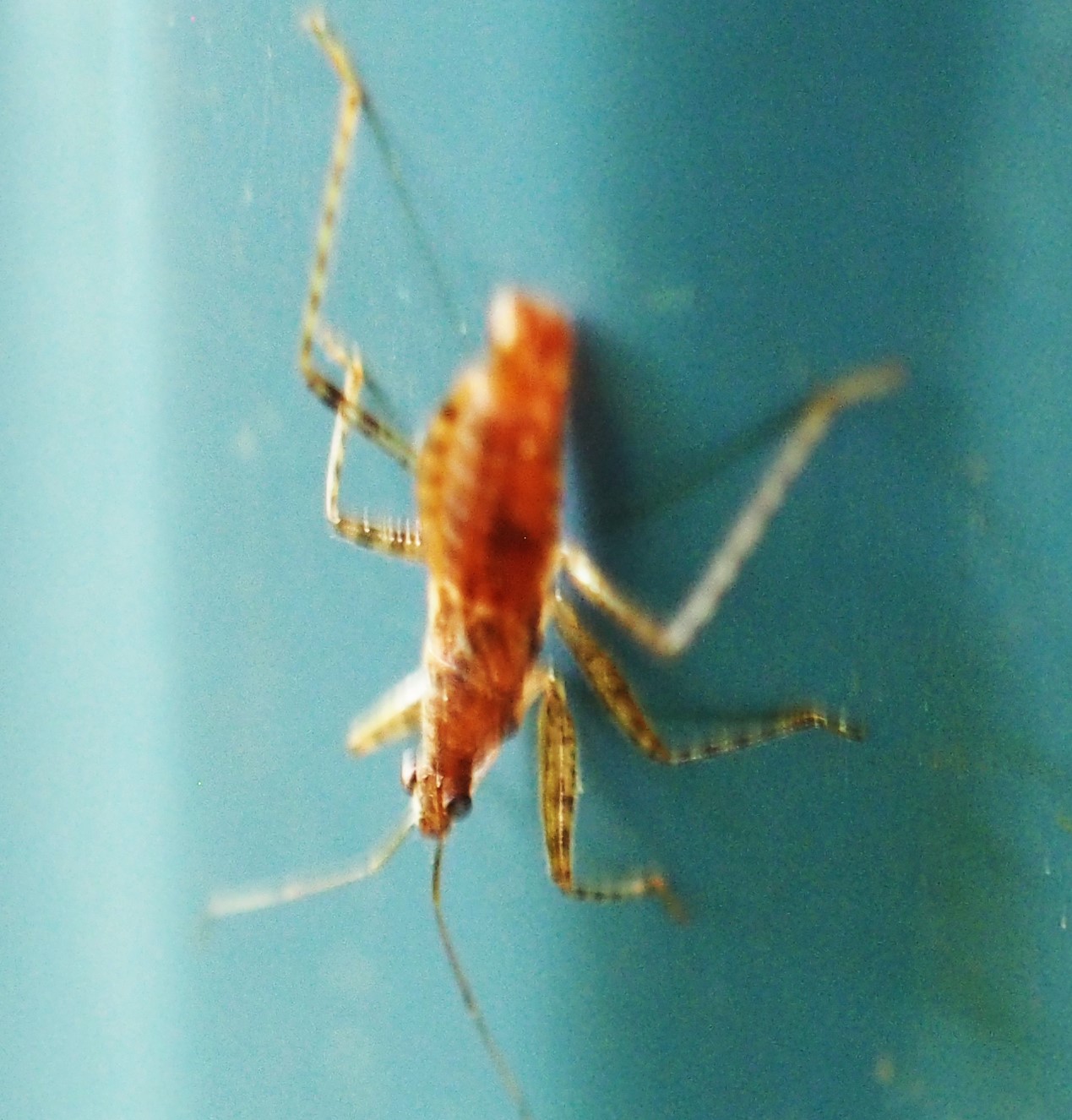
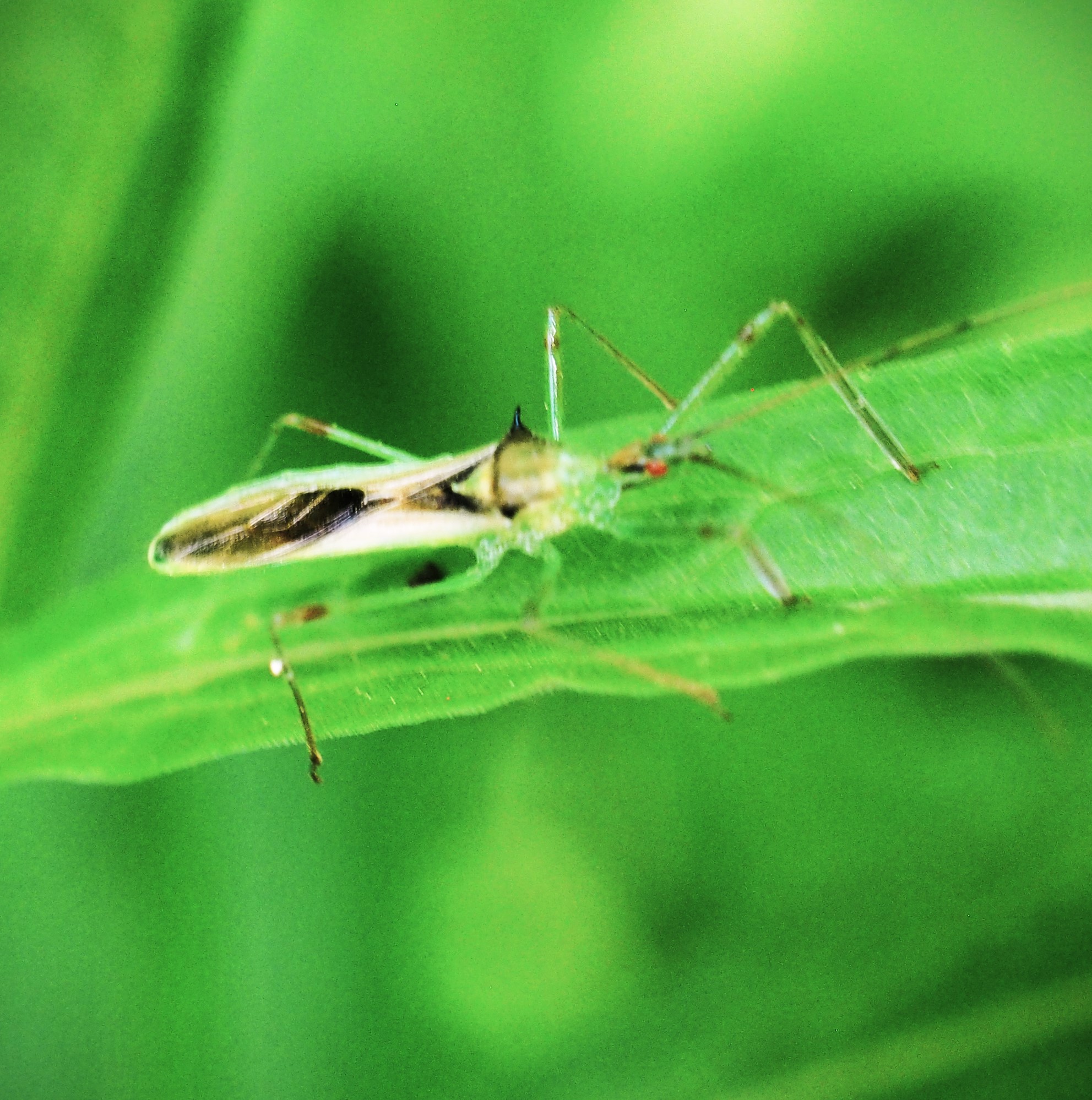
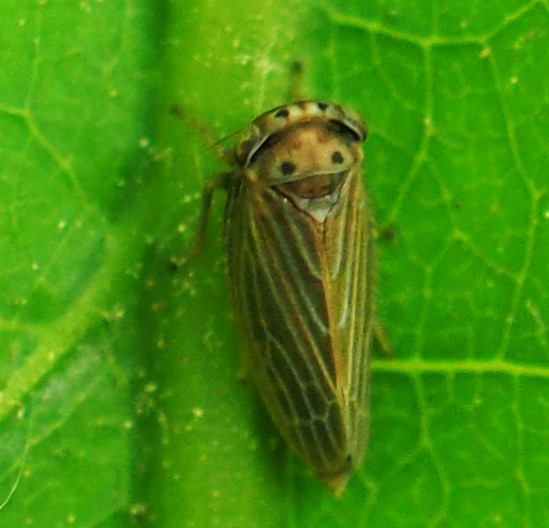
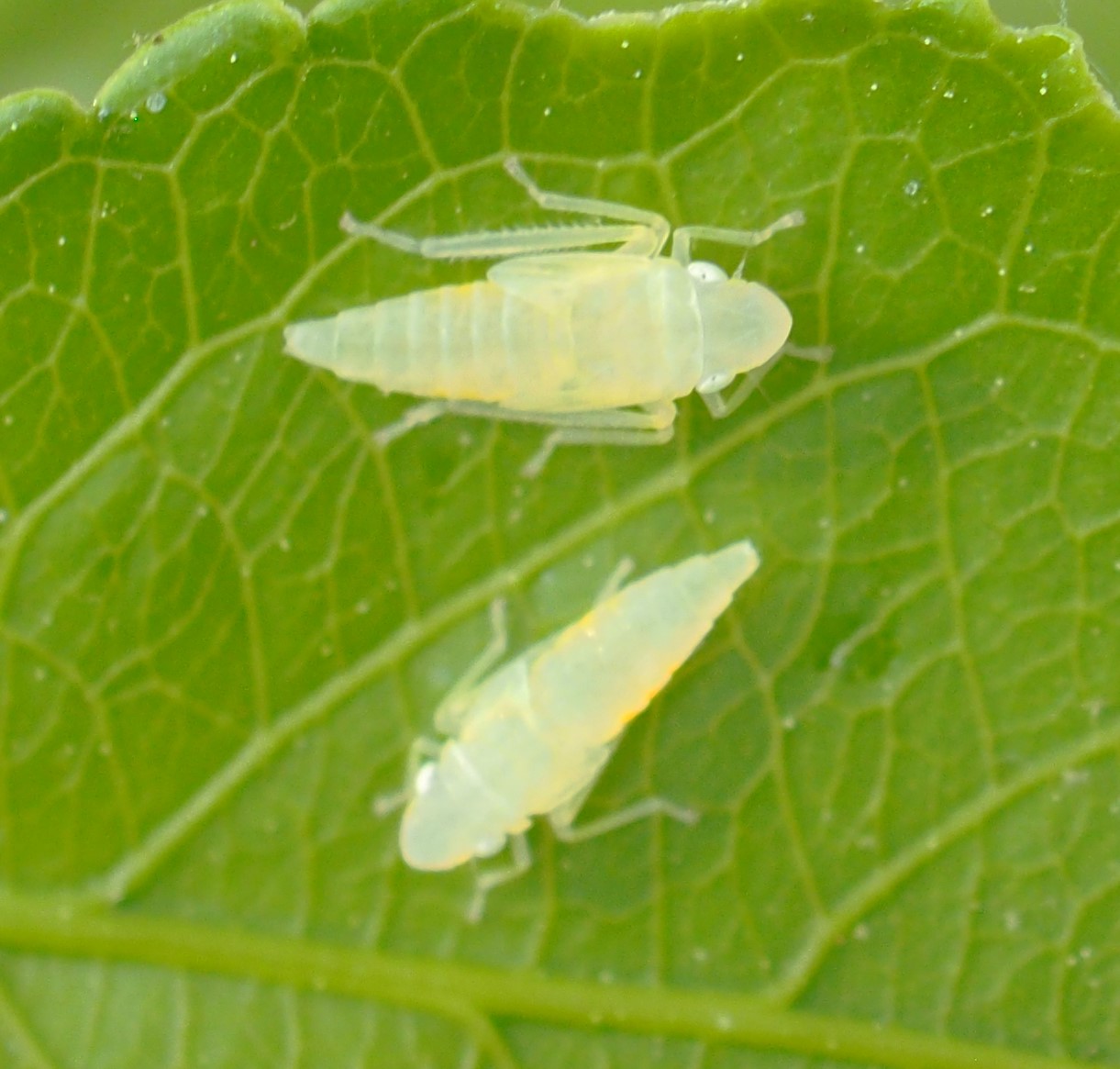
Here are a few more Bugs. First is a really Woolly-looking one. Next is one that looks like some kind of Plant Bug. Finally, one that looks a LOT like a Plant Bug.
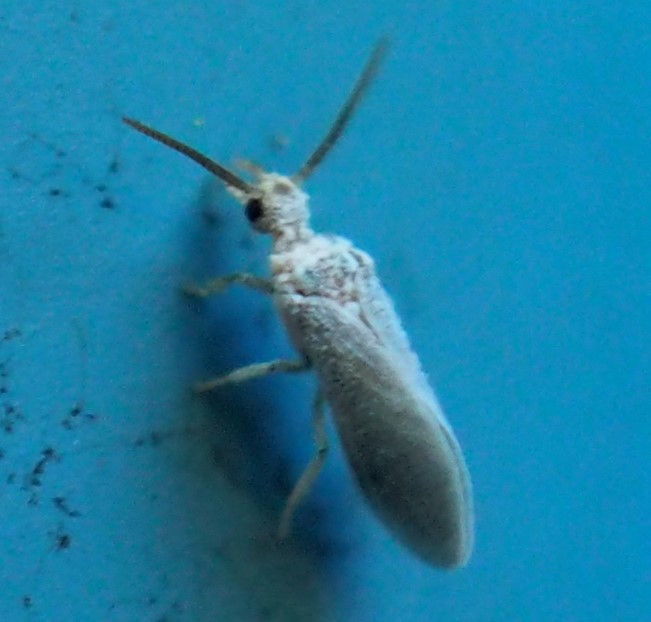

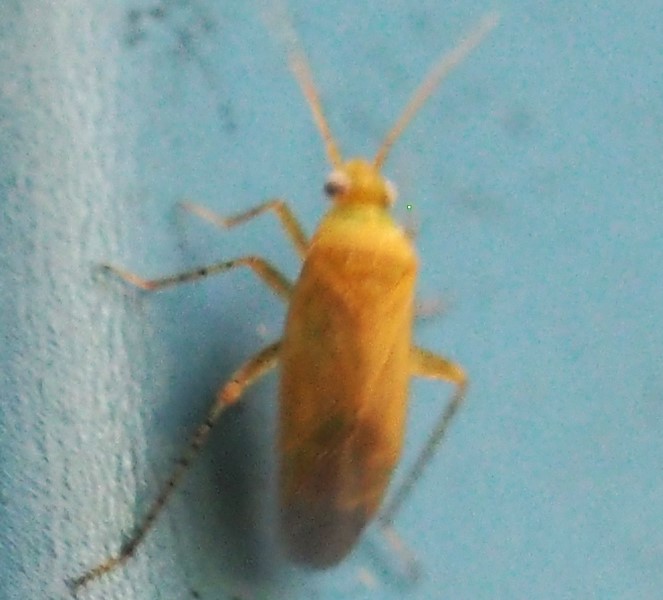
Let's look awhile at the Barklice, at least in so much as they have let us see them gradually come out of hiding. First is the so-called F-Winged
Leafhopper (Graphopsocus cruciatus). Next is its Nymph. Third was a huge surprise. I hadn't even seen or distinguished a picture of its Nymph, But suddenly the adult of the Yellow Barklouse, Venezuela flavidus, appeared on May 28!
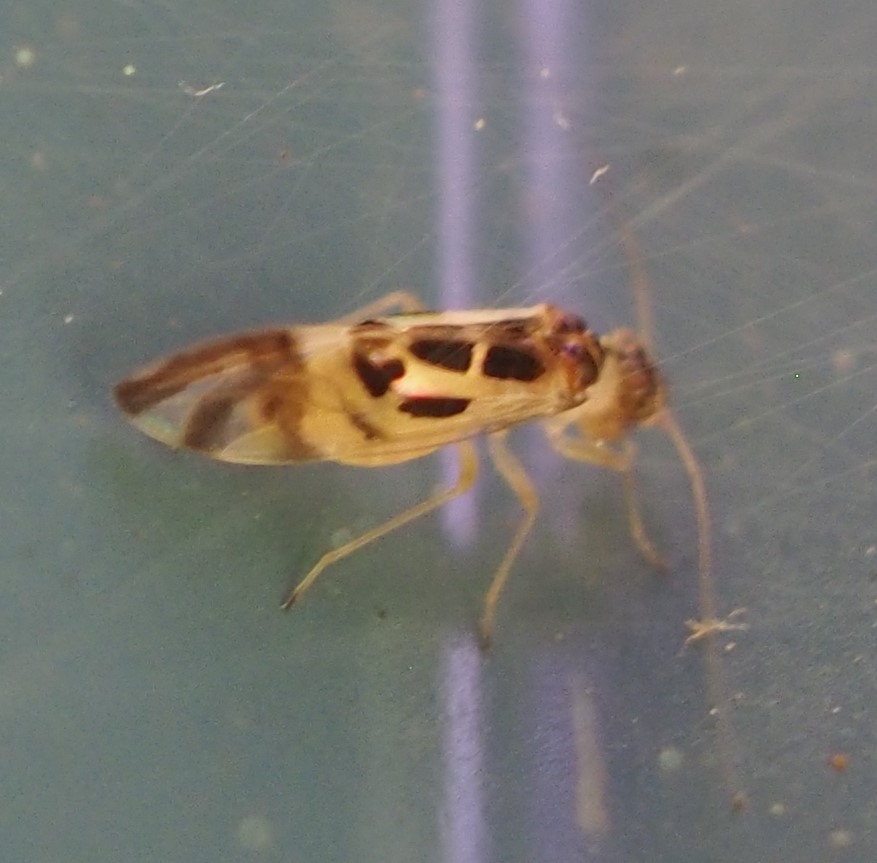
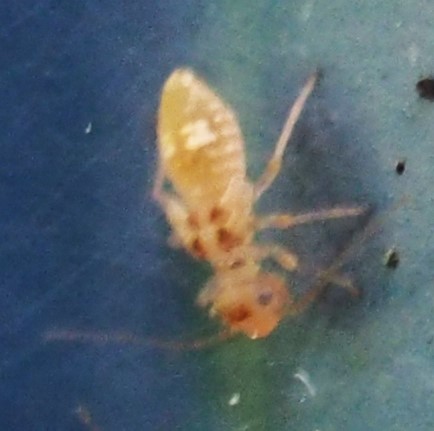
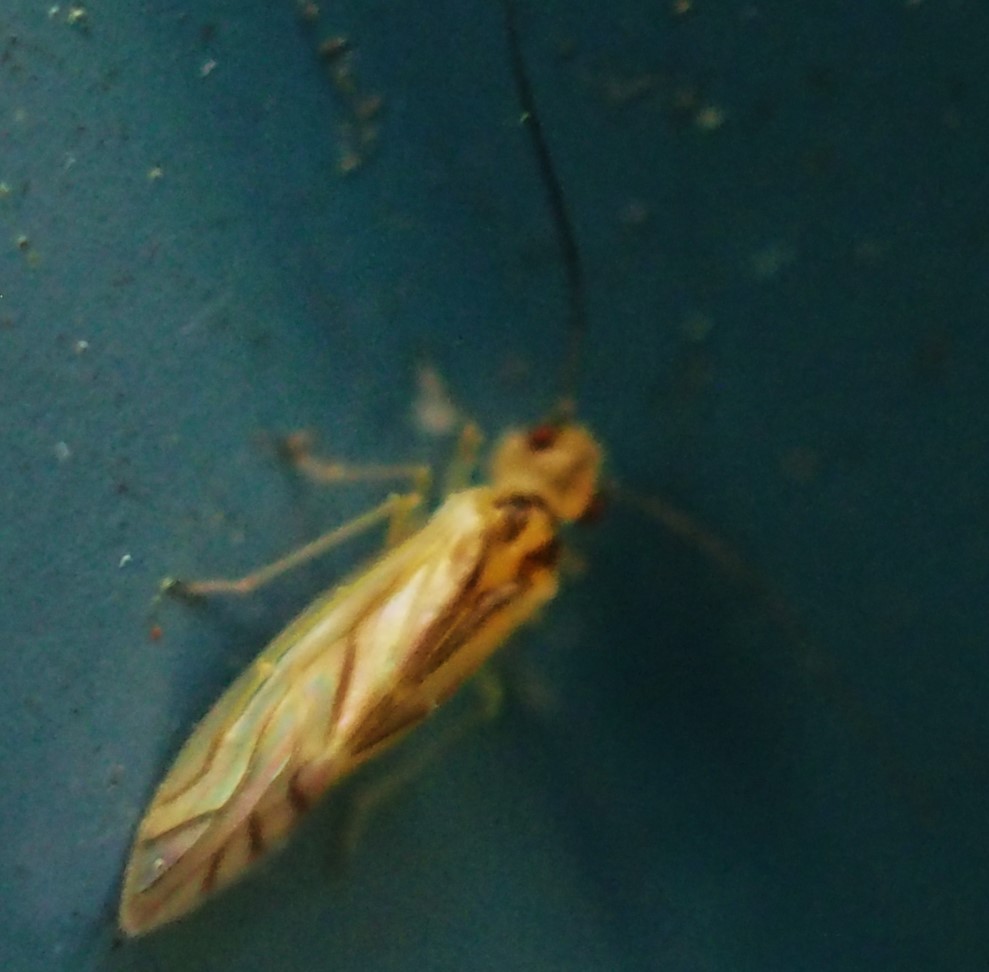
So let's see what amazing Flies are in store for us! First is Rainieria antennaepes, which seems to mean its leg is like an antenna or vice-versa. They do seem to be sparring for the titles, especially in picture 3.
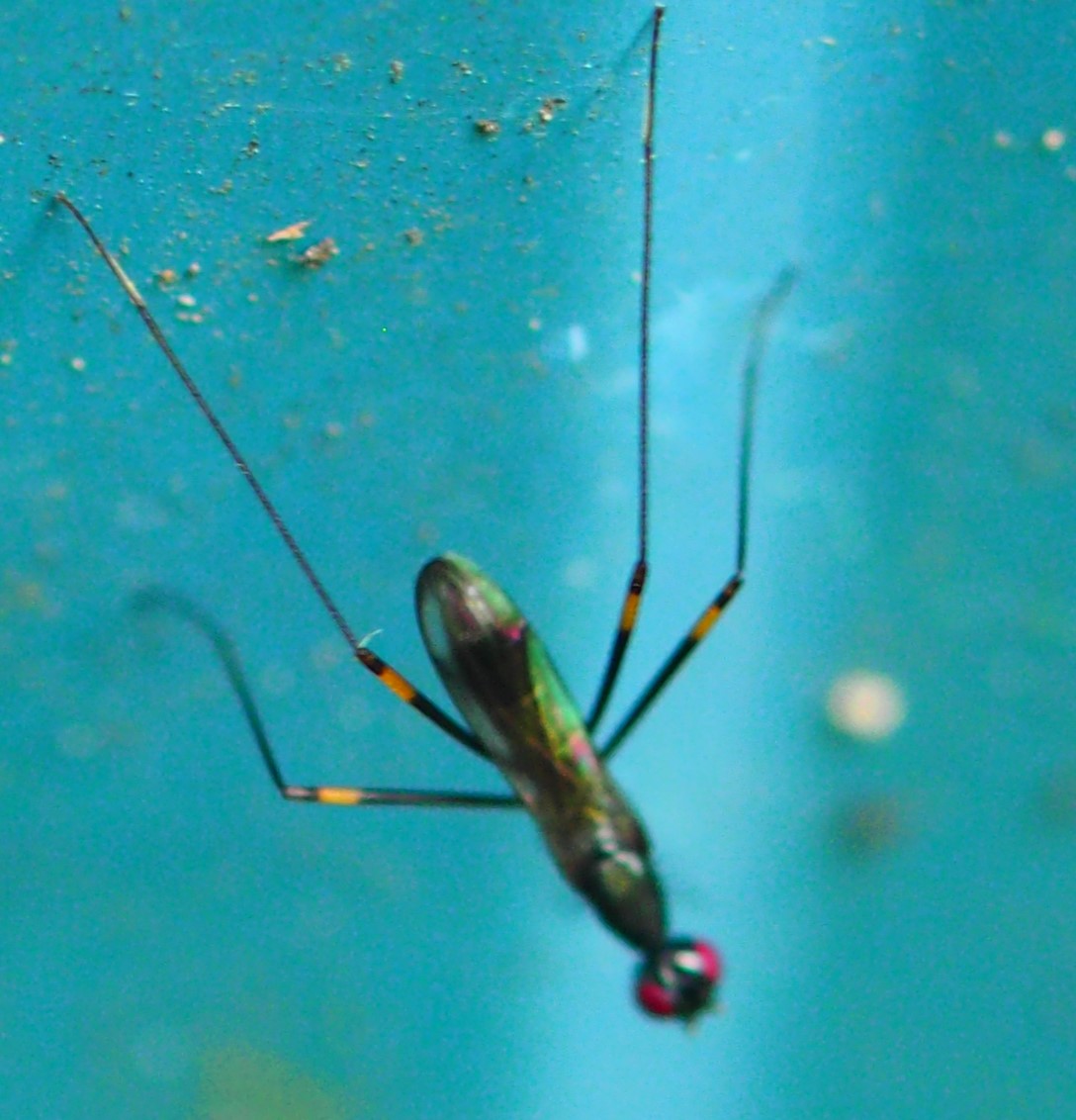
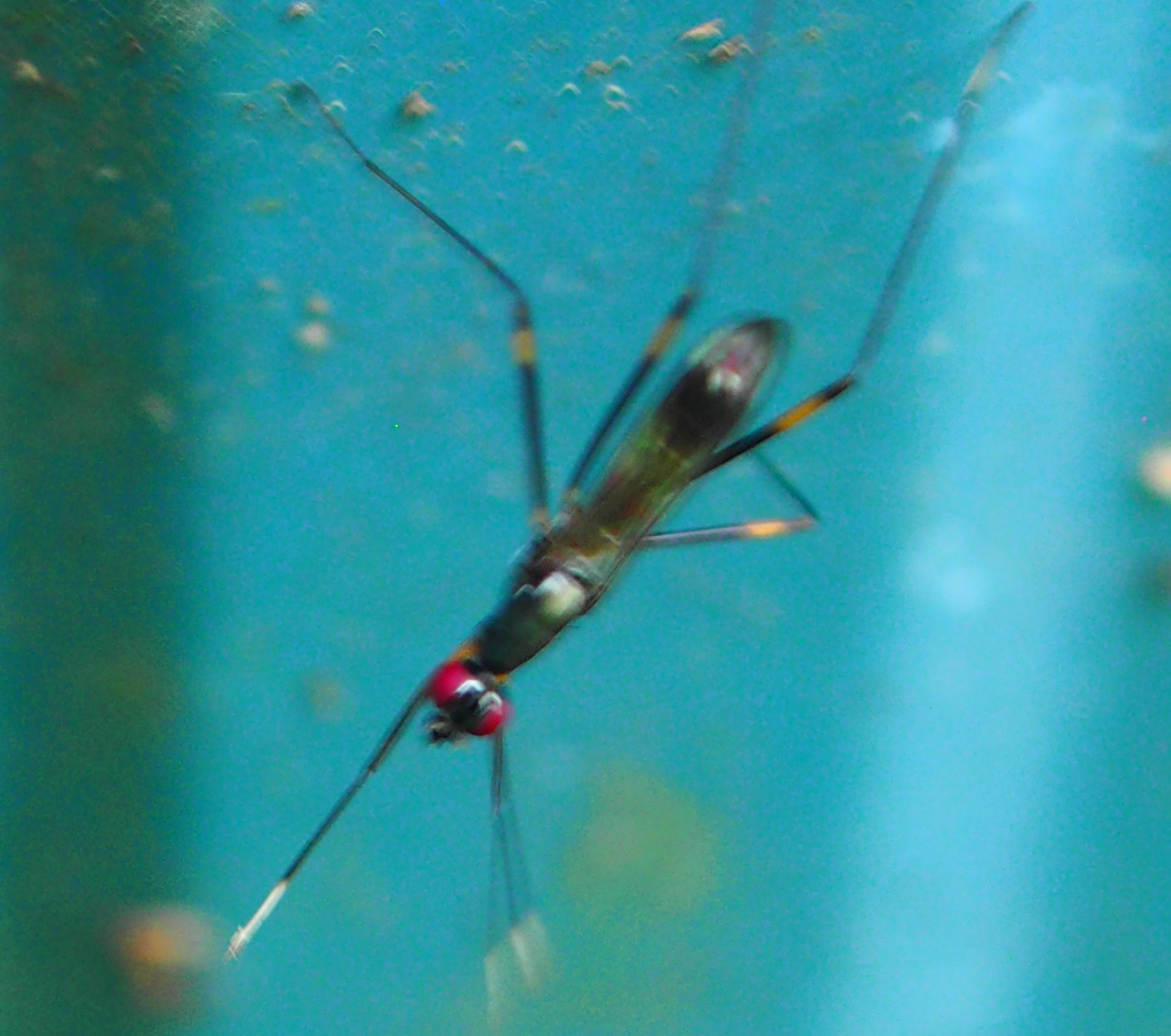
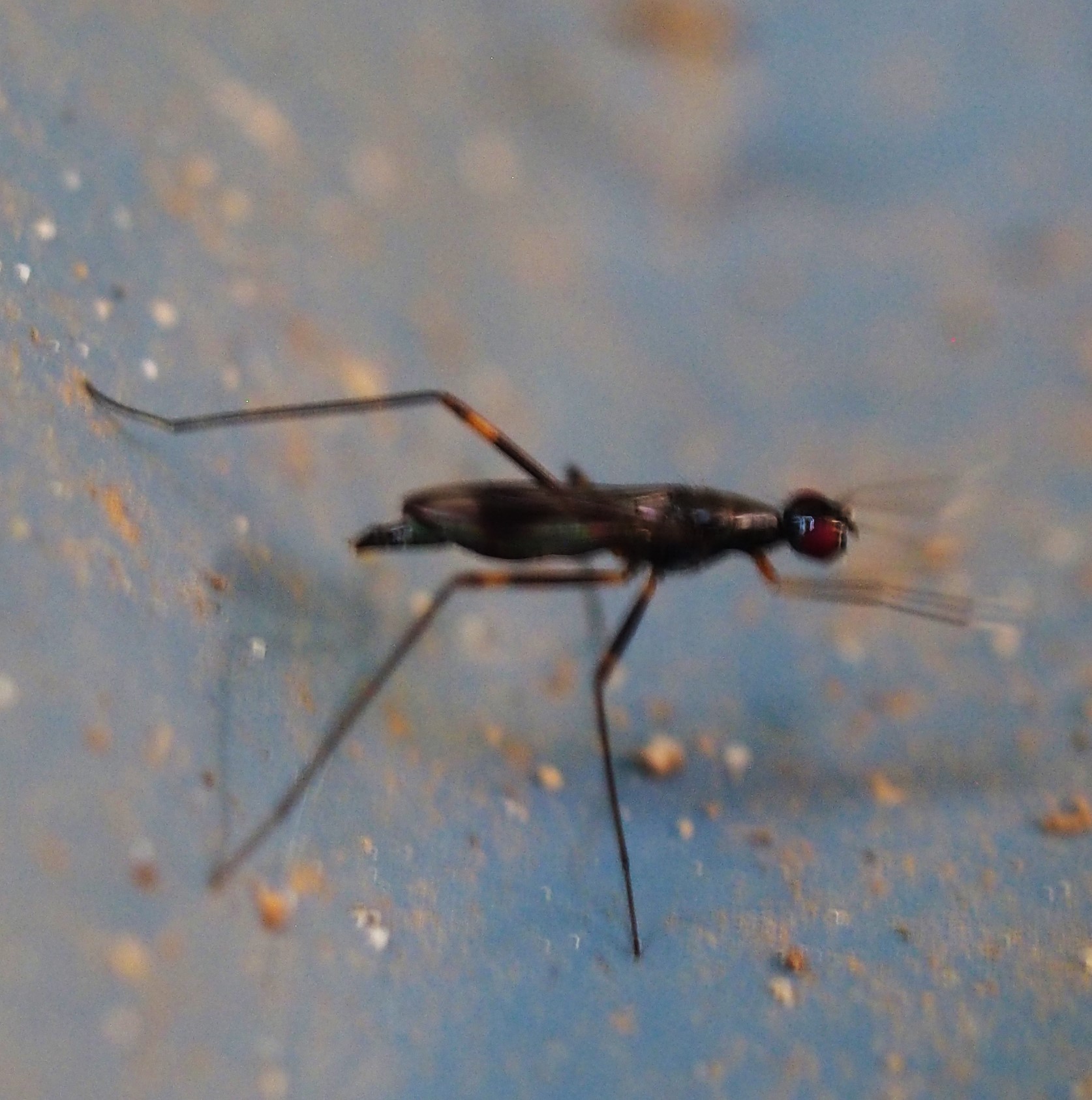
These yellowish Flies are probably Root-Maggot Flies. Second is another Common Snipe Fly. Third is Sylvicola alternatus. Now for one of those nasty pedantic facts. The species name of most creatures is supposed to be the same gender as the genus name, but if you remember day one of Latin class, most singular nouns ending with an "a" are feminine. But since our guy's name is masculine (ending in "us"). So I googled Sylvicola and found it is indeed a masculine word (and probably Greek). End of pedant lesson.
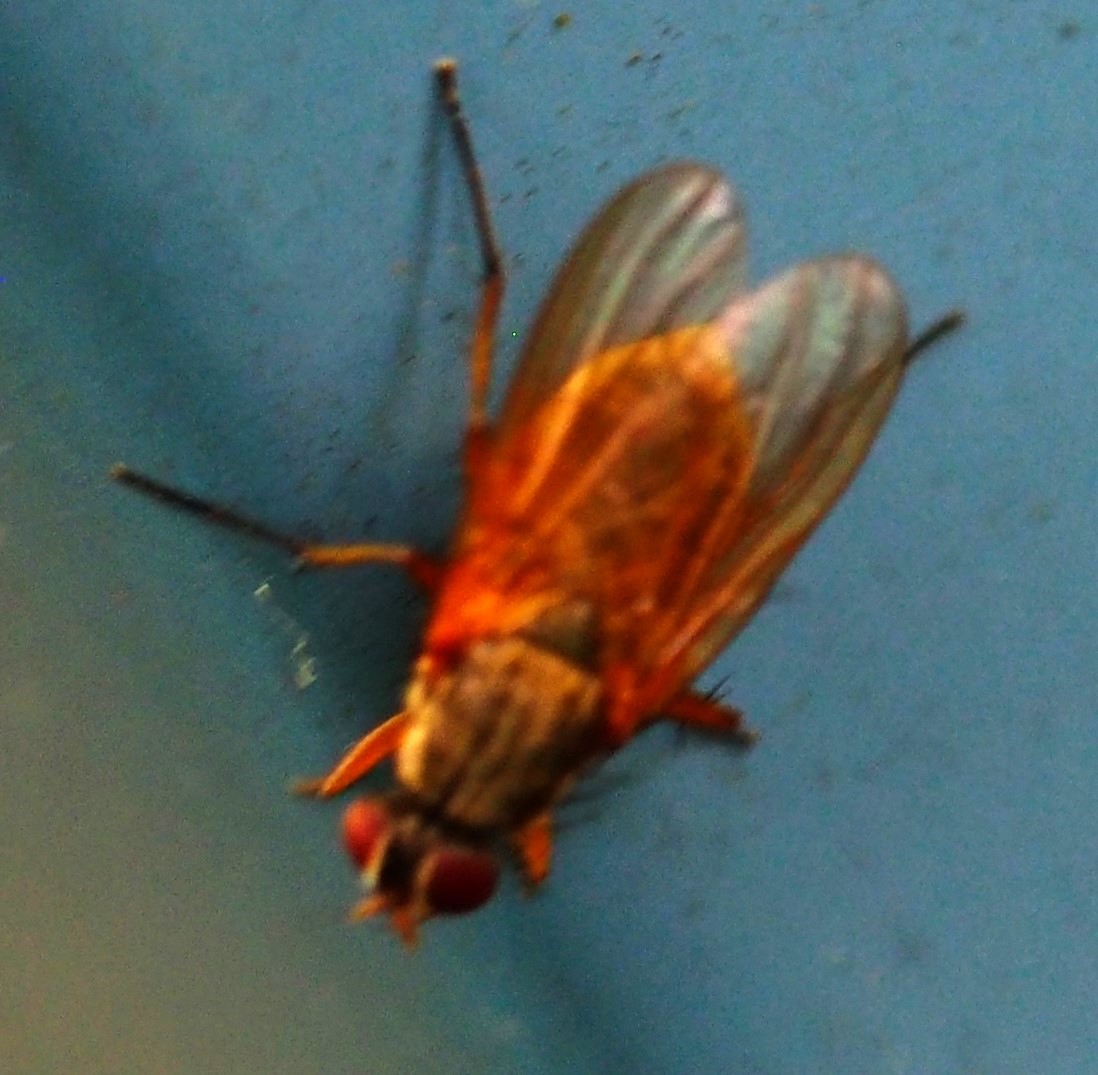
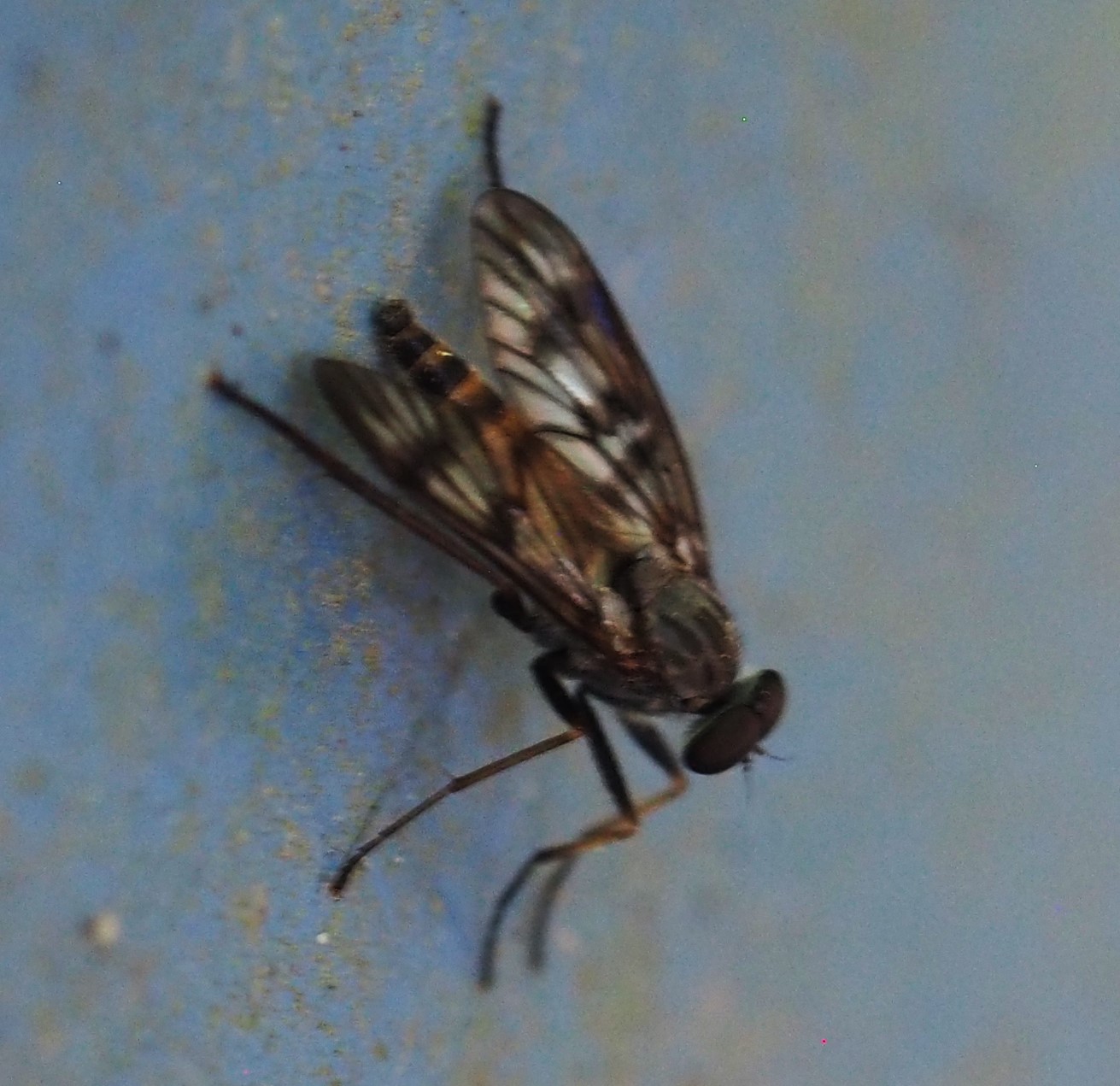
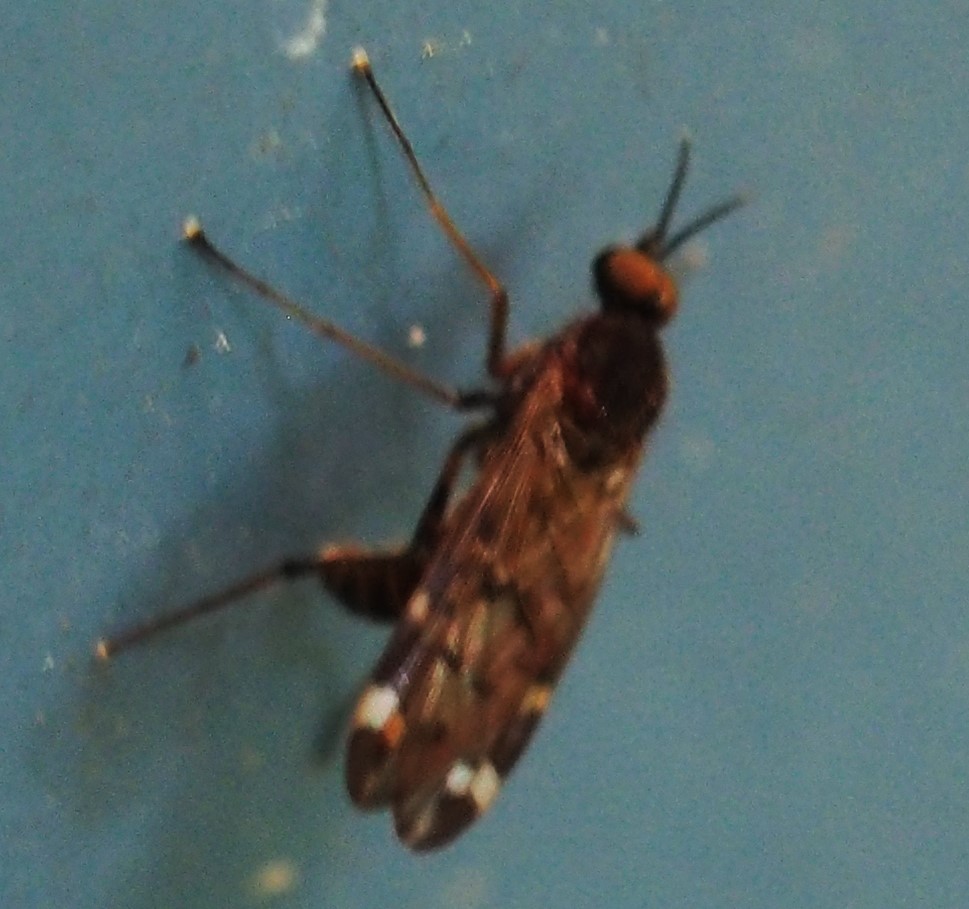
Here are four really unknown (by me) Flies. But number 2 seems to be in genus Platypalpus.
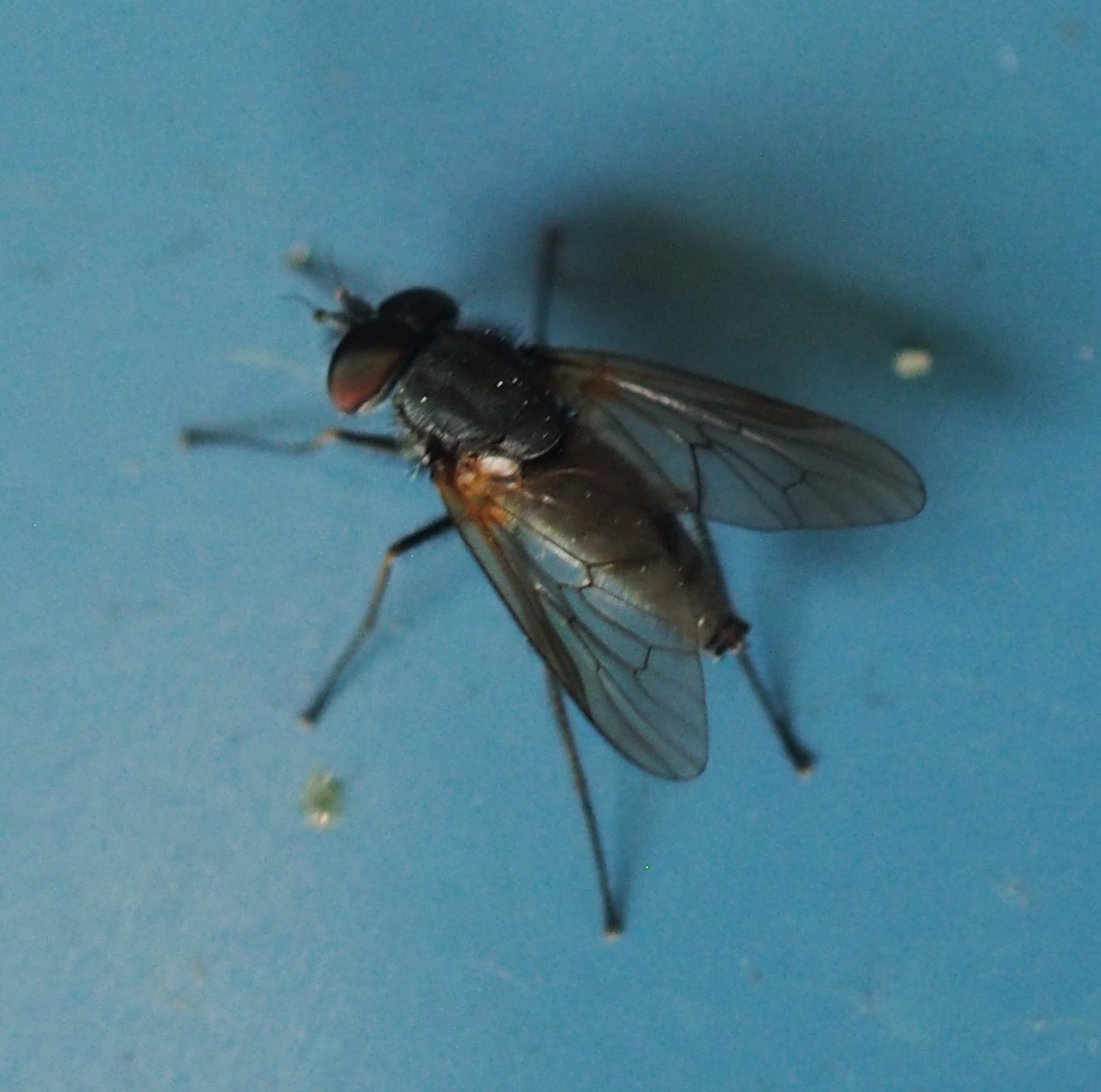

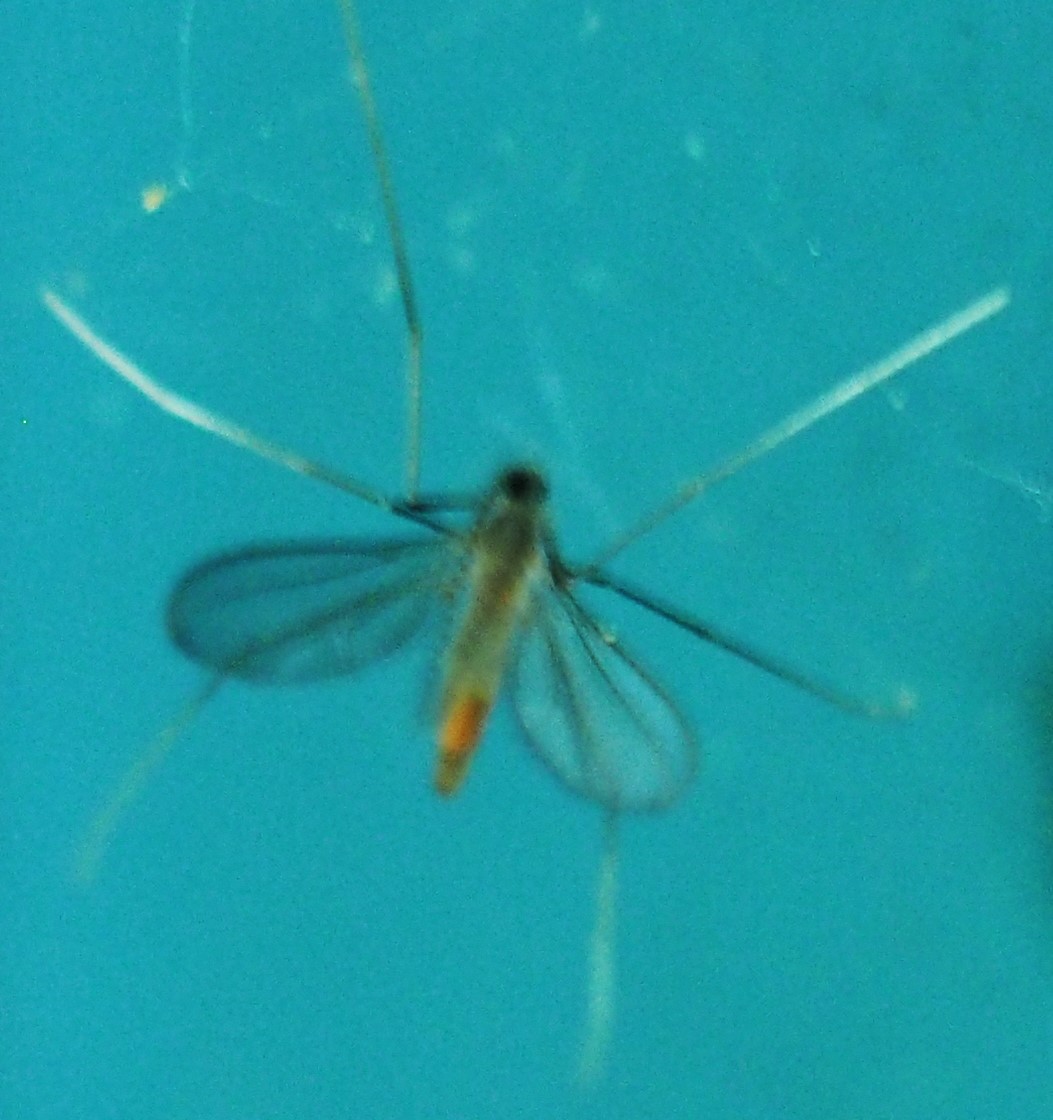
.jpg)
The first of these Flies is a real Fly, namely the Bathroom Moth Fly. The second one I thought was a nice Beetle until iNat told me otherwise! I love these Flies with all the colors, even if I haven't found their names. Fly number 4 is a Greenbottle.



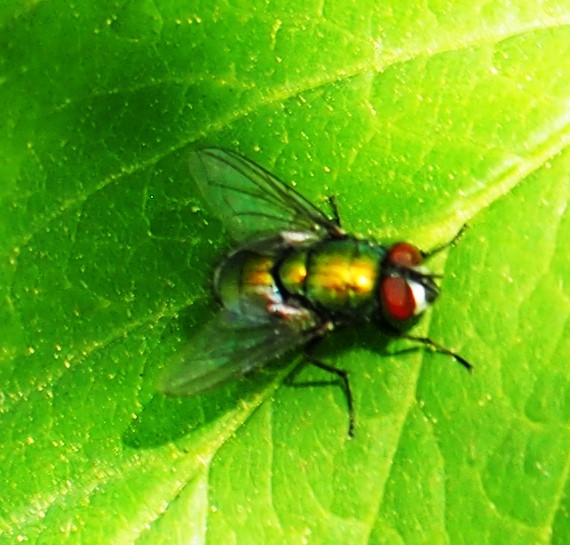
Here are some more pretty (and maybe already known to you) Flies. First is one of those lovely Midges in Tribe Tanytarsini. Second is a Mosquito, probably in genus Aedes because of the white-spotted legs. Third is one of my favorites.
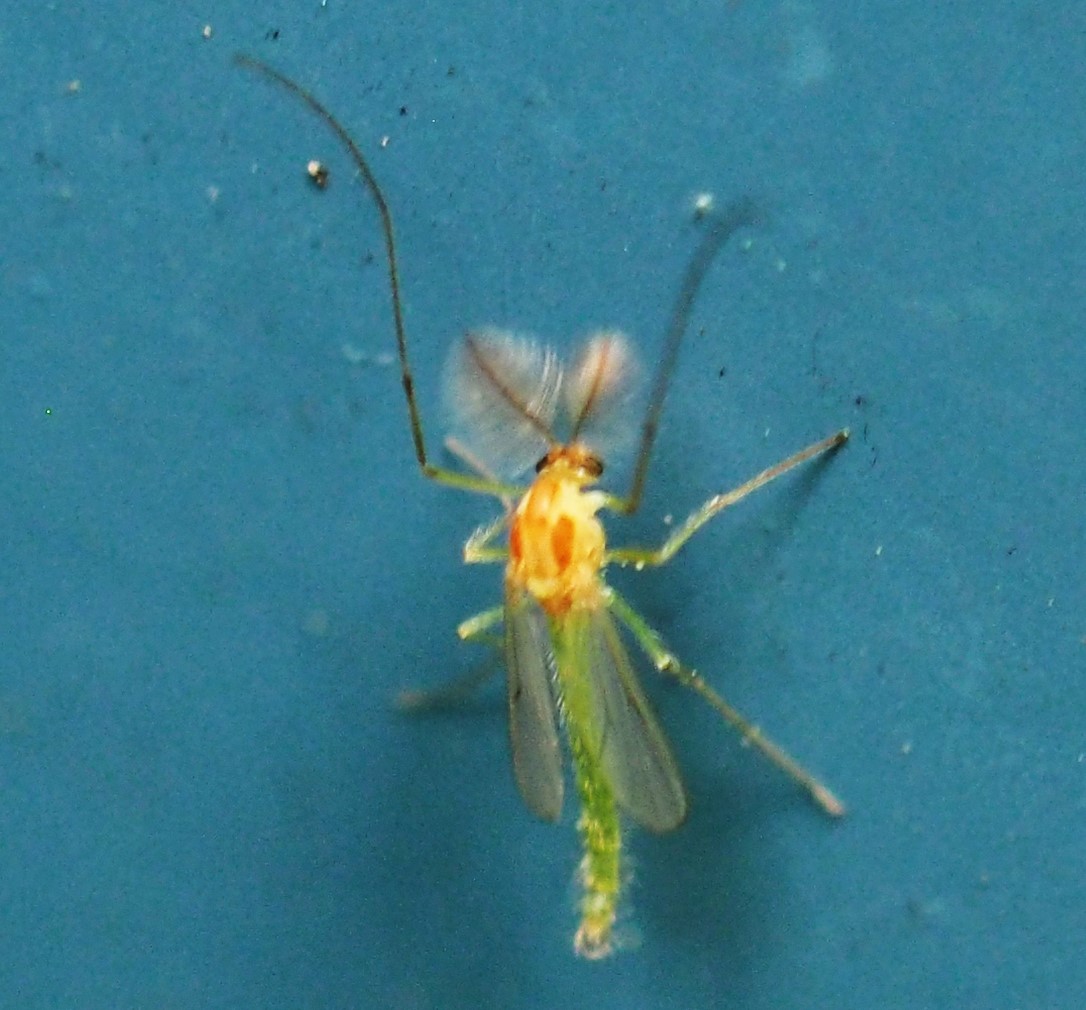
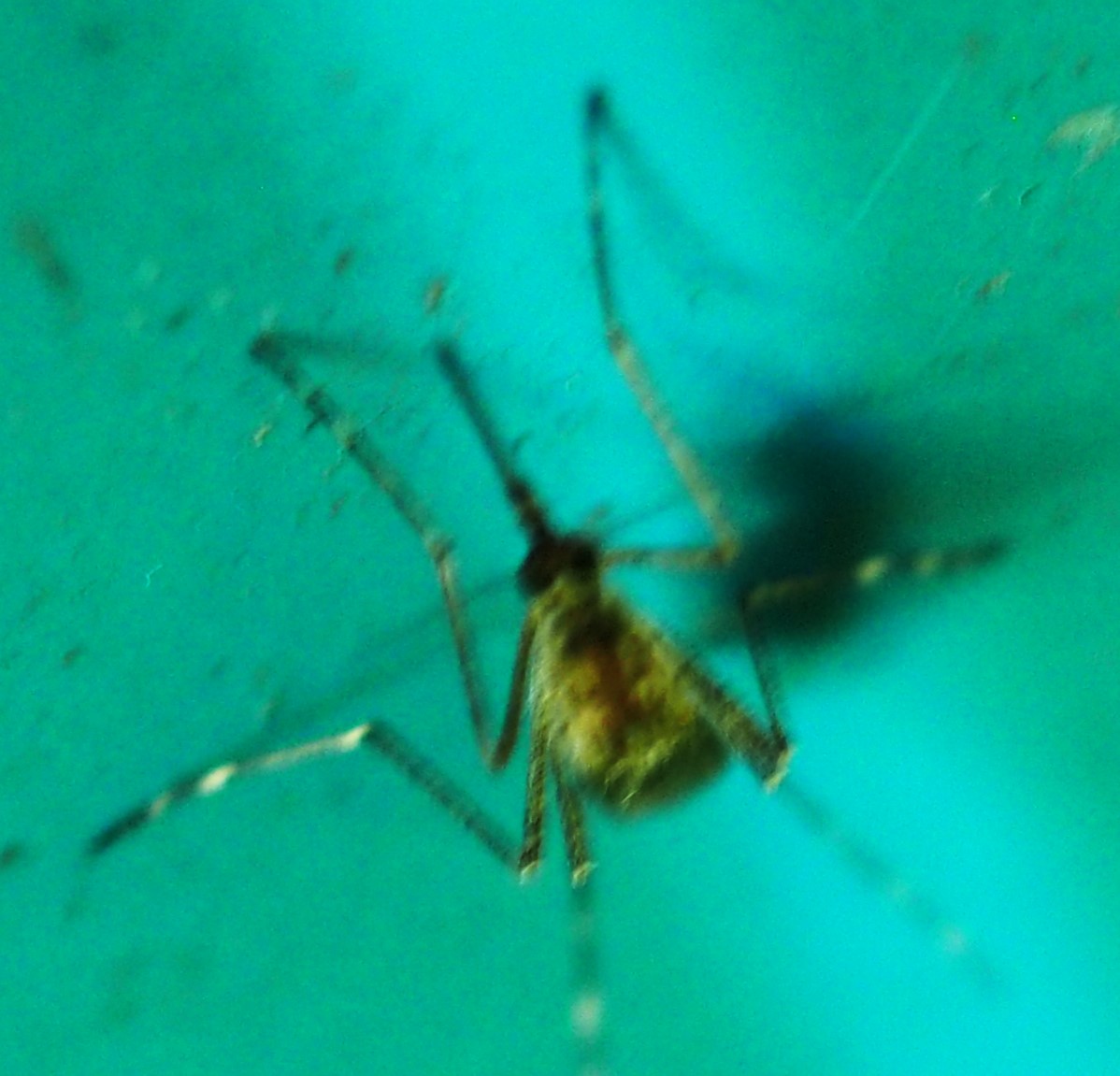

Here are some of the Moths and their Caterpillars we saw this week. First is that Norway Maple Pigmy Moth that seems to be very common. How strange is that when the back yard is dotted in Norway Maple Trees. Right now they are dropping their "helicopter" seeds into the pond. Maybe you'll see one later. That last one is a Leaf Miner Moth.
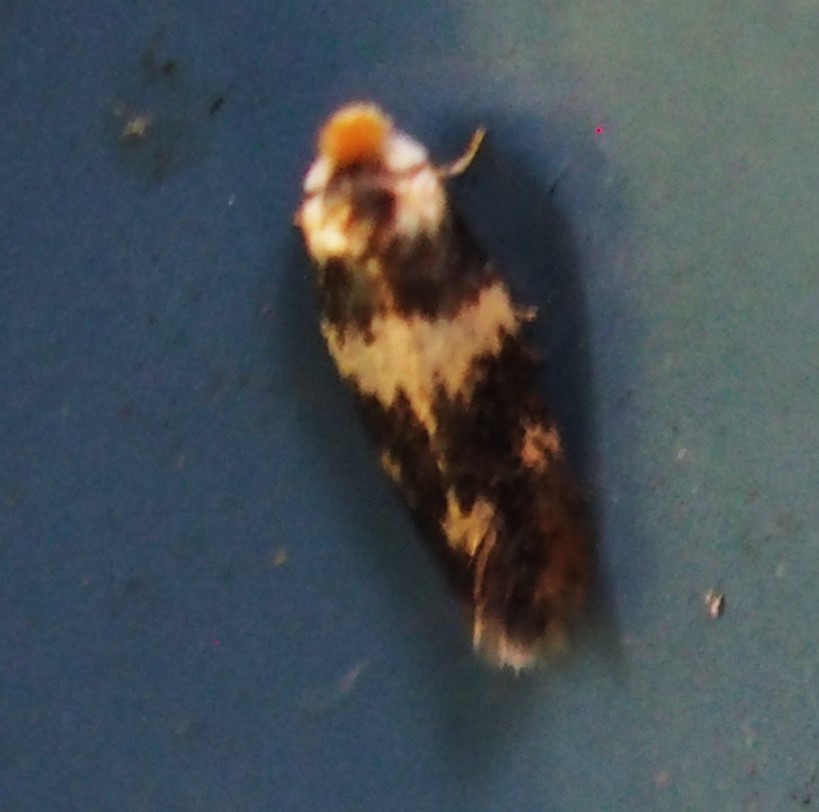
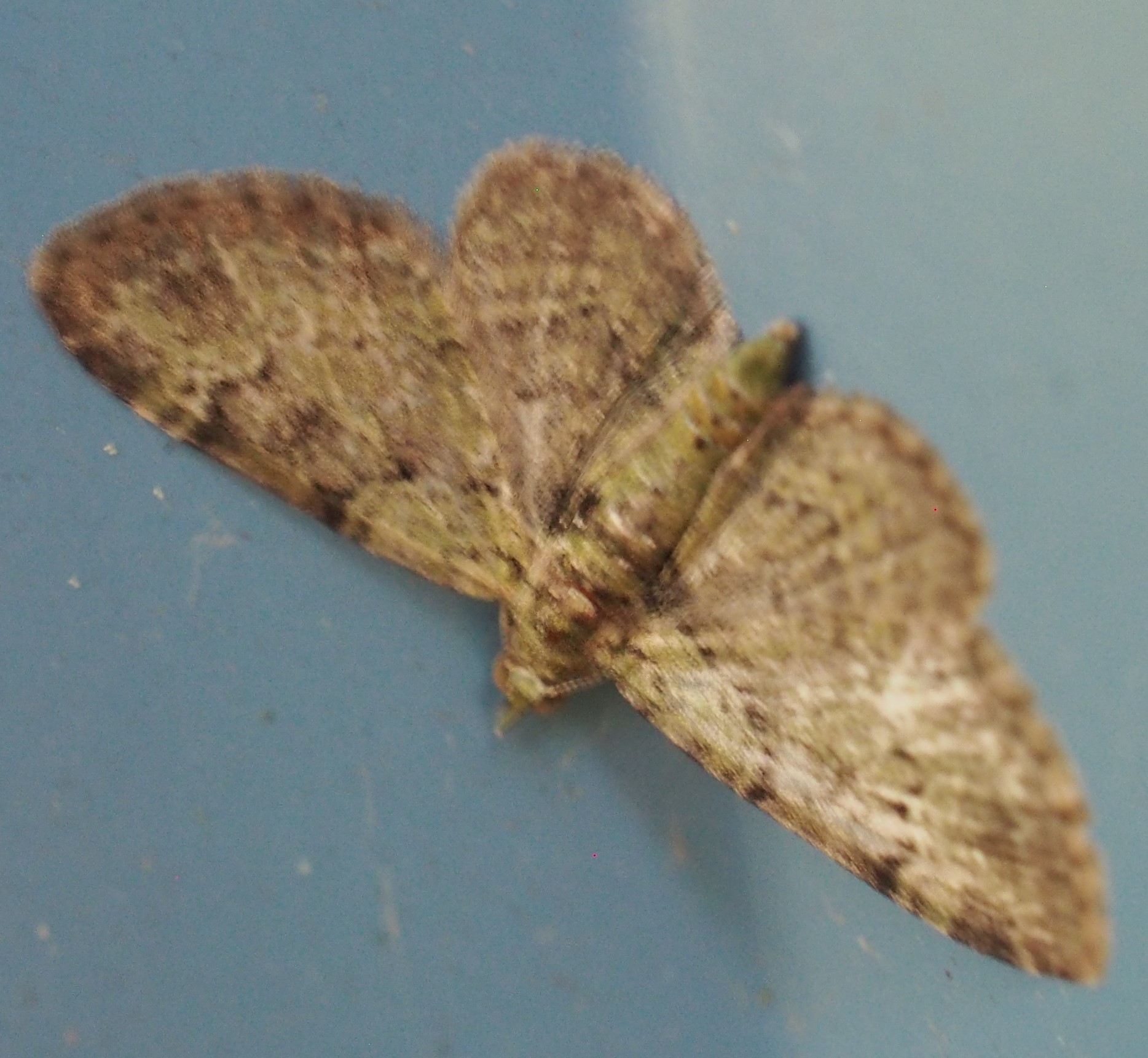

Here are some Caterpillars of the Week. First, a bright-green one, and then one that seems to be starting the making of some kind of cocoon or other kind of cover for it. Third is one of the many Spongy Moth caterpillars.
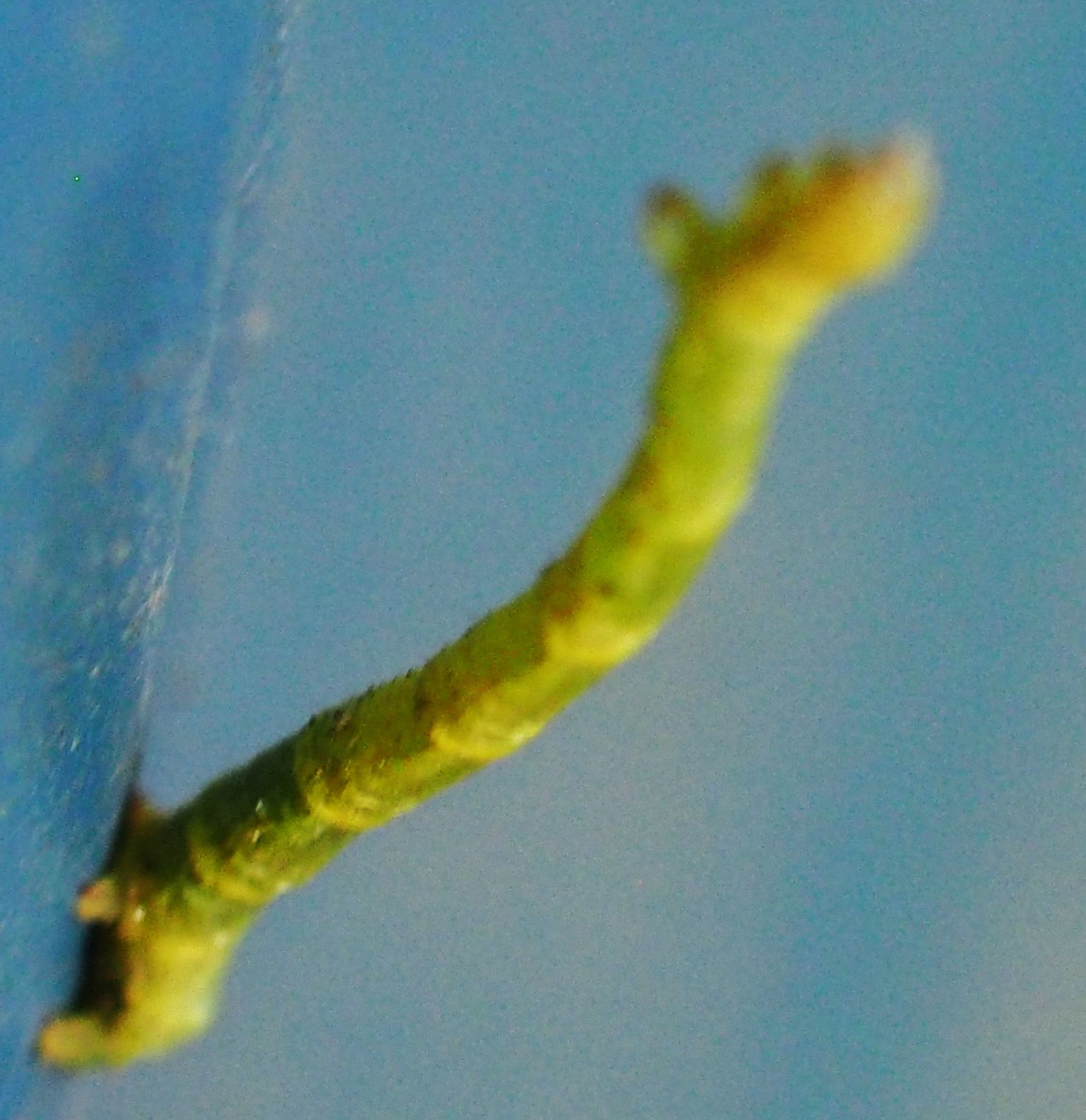
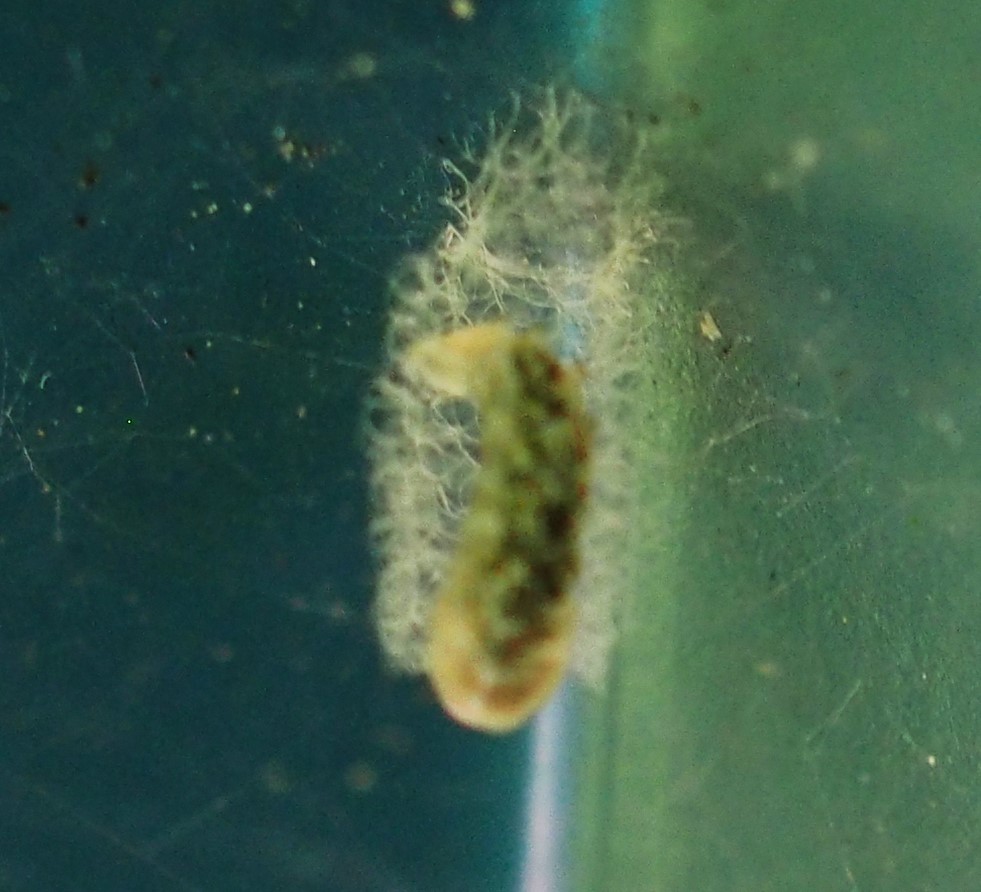

How about a short Flower Walk? I spent a lot of today chopping off branches that were making my picture-taking space too dark for most little things. That means some time off taking pictures, though it should help in the future. We begin admiring the nice new plantings for one of the deck boxes. As we walk along, underfoot almost everywhere at the edge of a bed or path is the Ajuga Carpet Bugle. The goutweed looks like a real flowering plant when a lovely green Greenbottle is sitting in it.
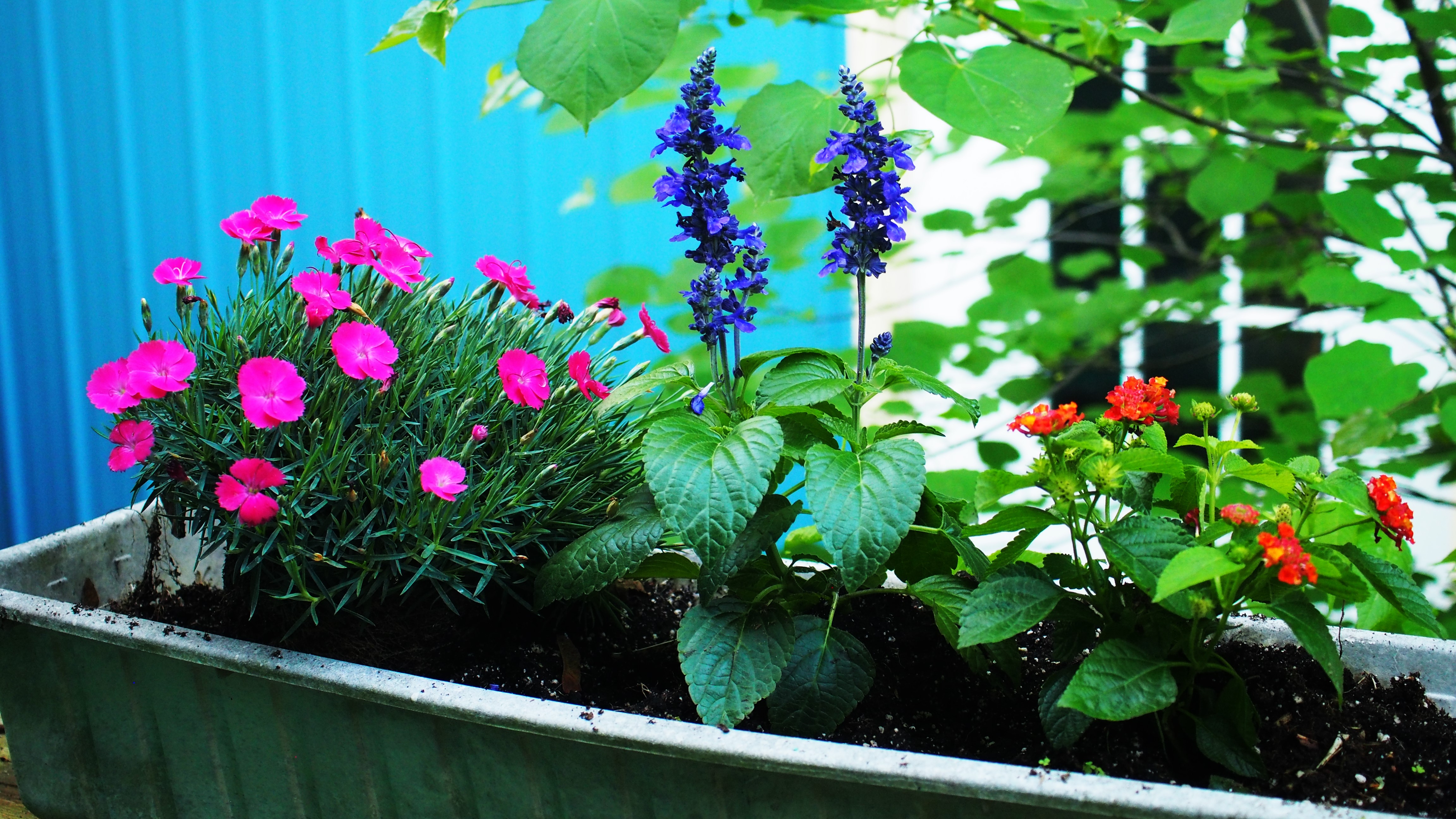
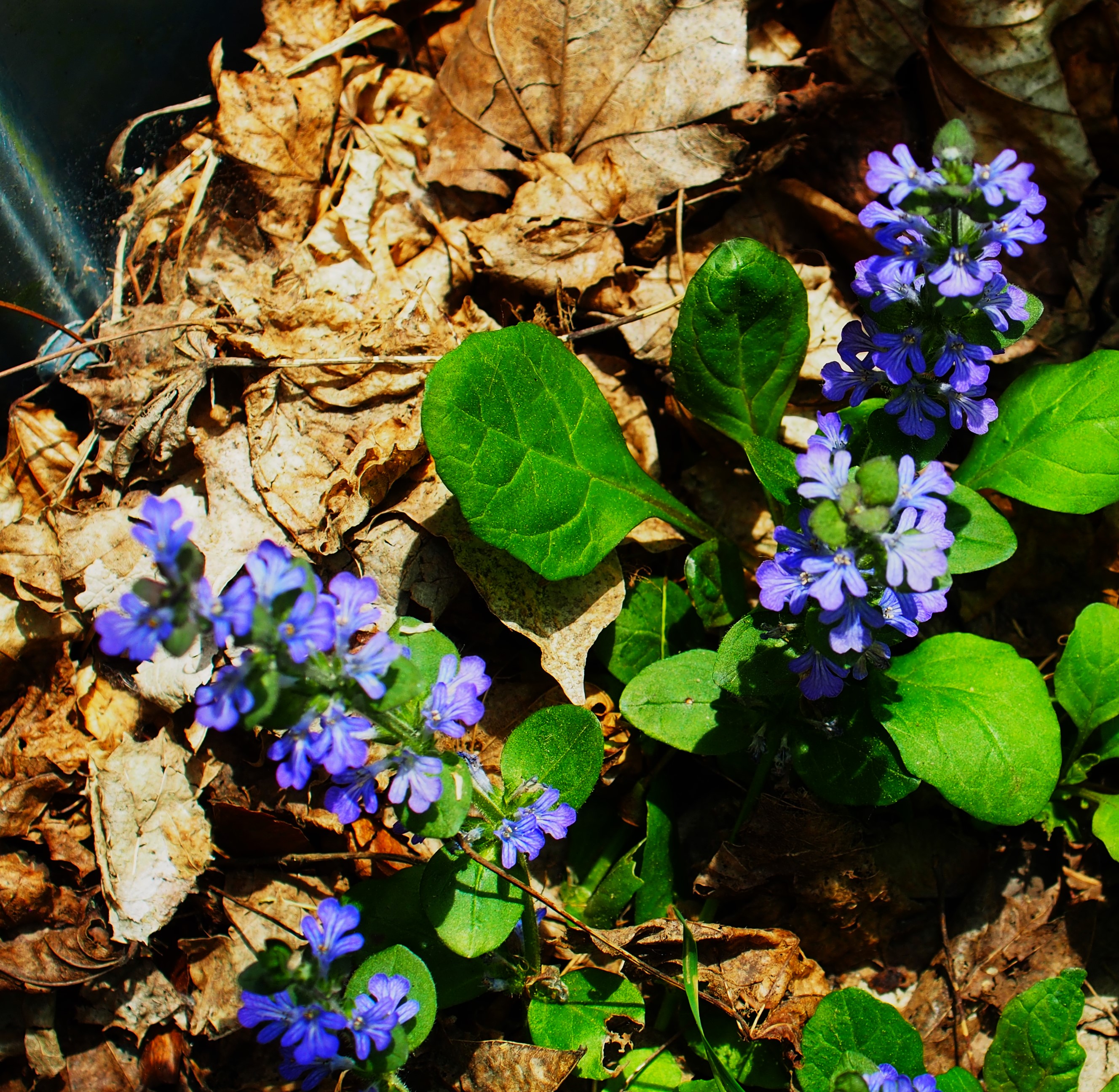
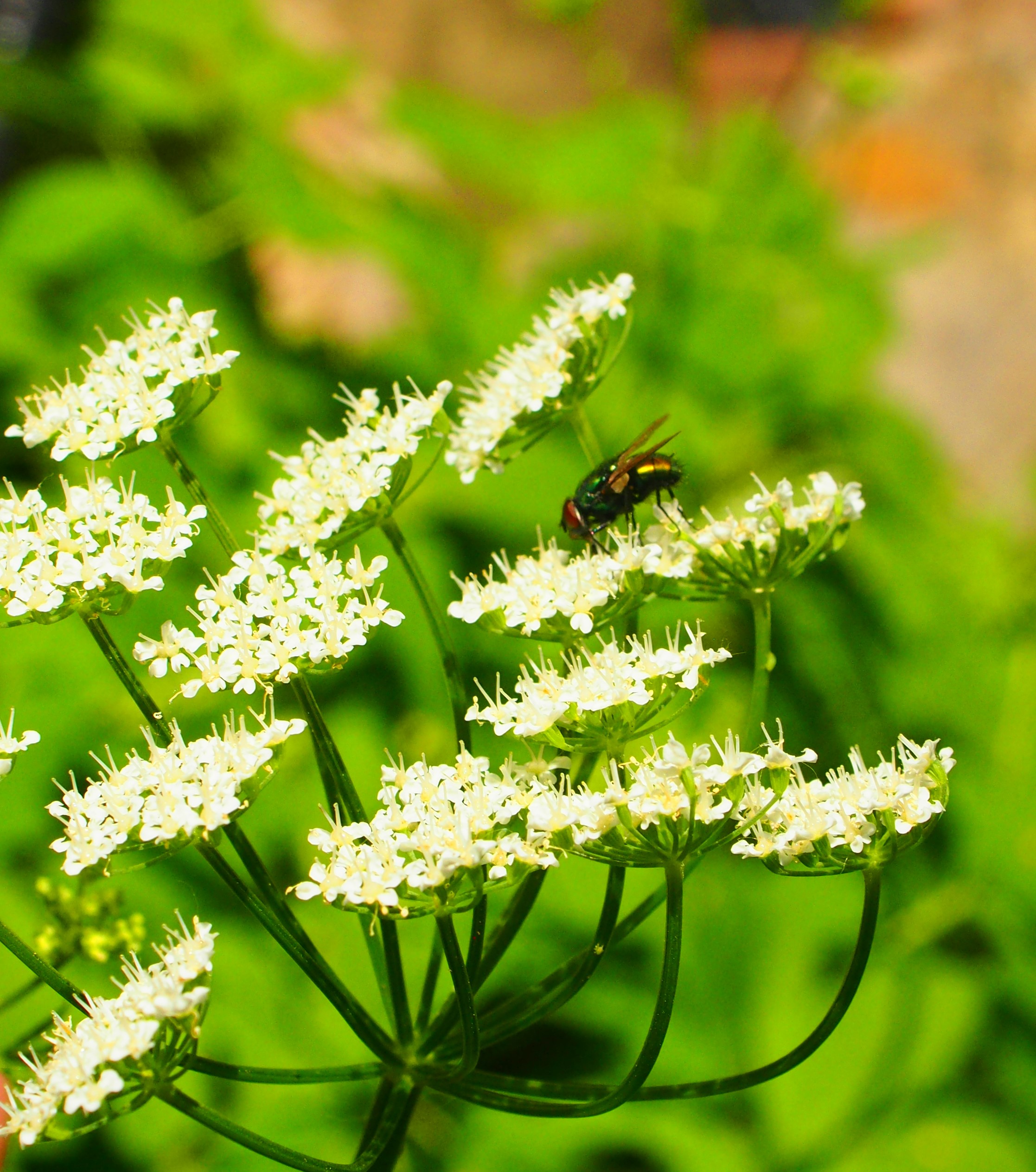
The Forget-me-nots are lovely and I especially like the shadows they create on the Wall. The Crane's Bill Geranium flowers are a bit few and far between, but who doesn't love that Pink color? The Honeybees really like that Blackberry nectar.
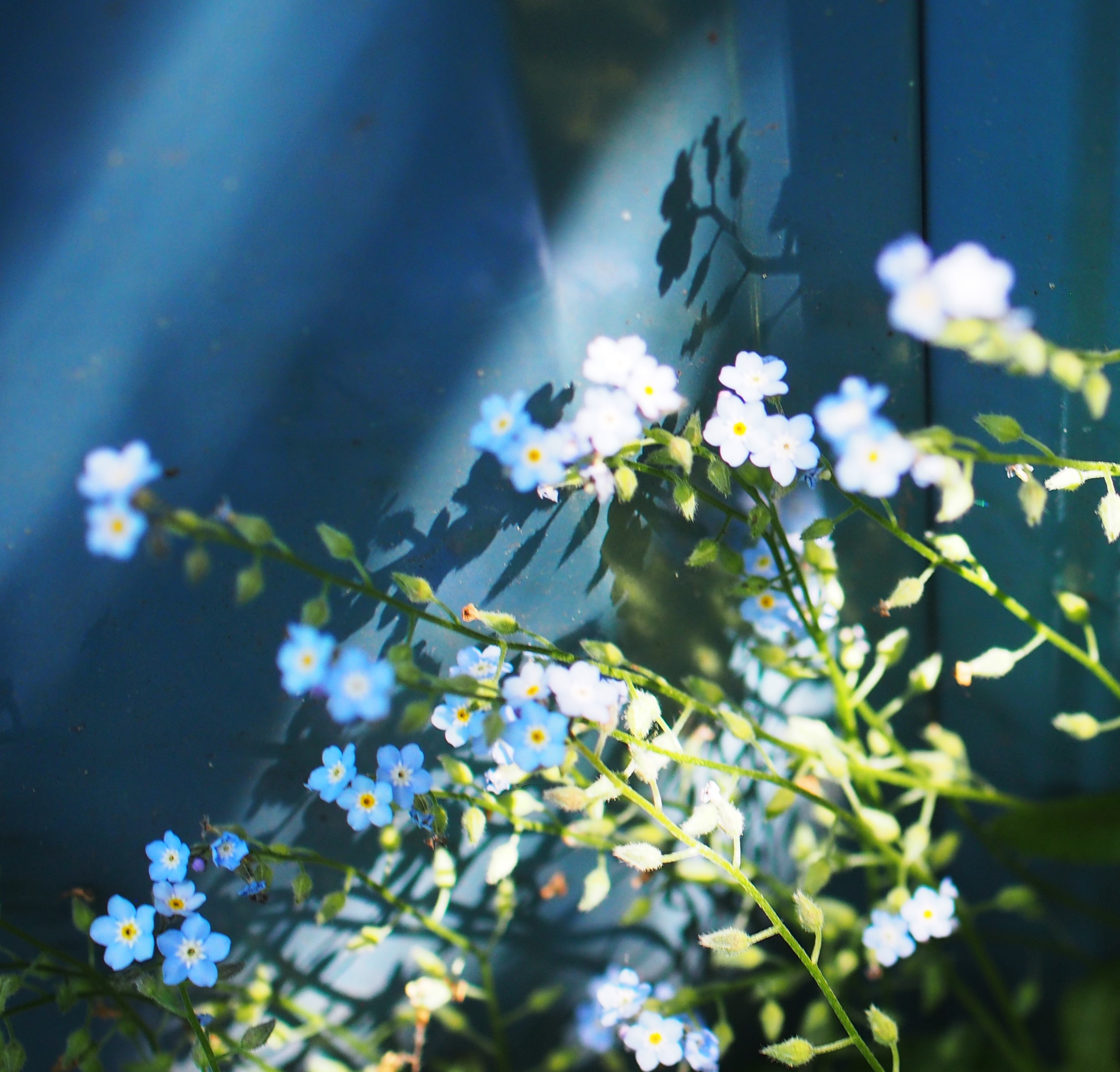

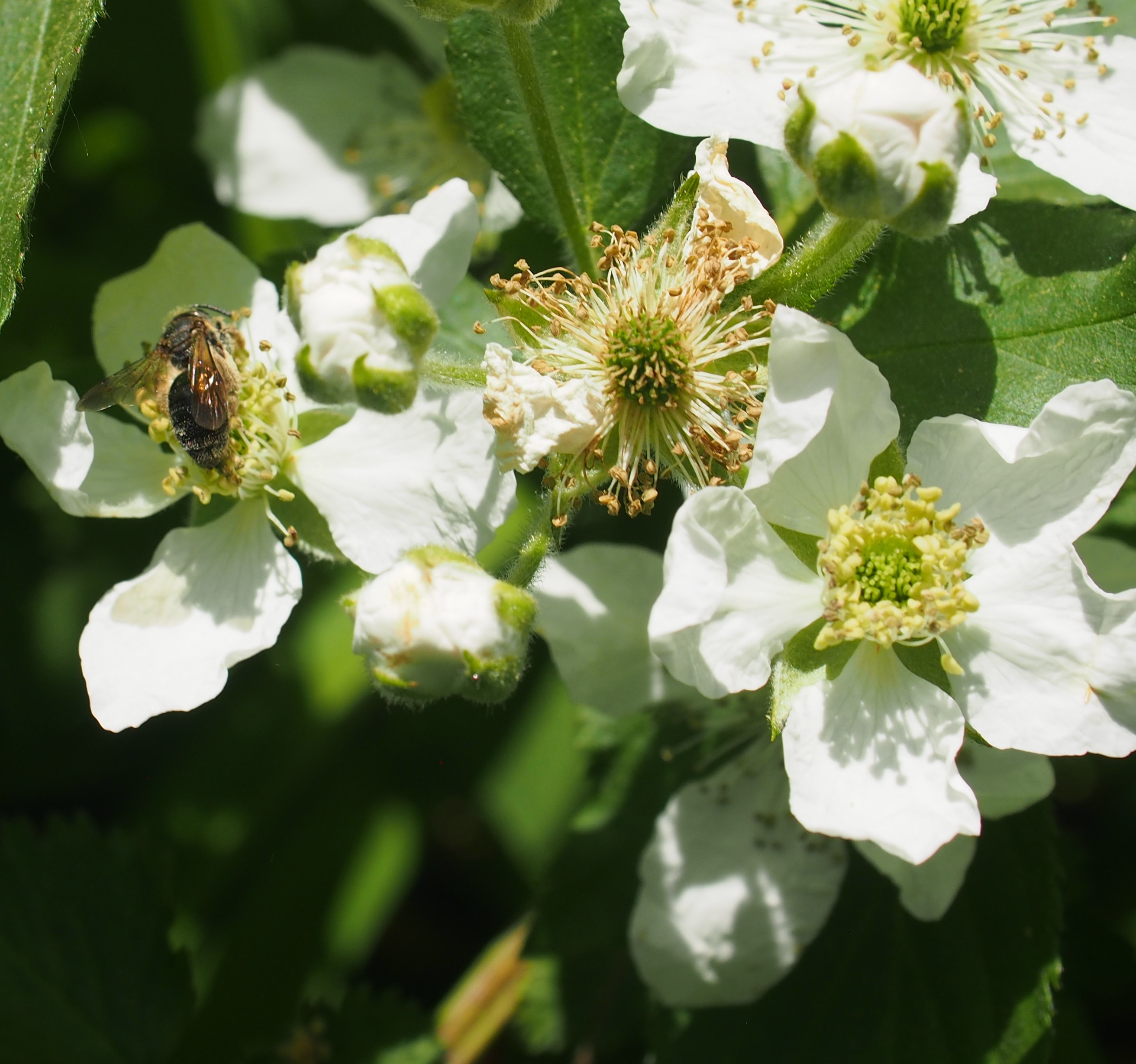
The Peony opens more every day. Thanks Ants! The Celandine Poppies are flagging a bit but will soon be back. But the huge Double Orange Poppy in the front yard won't be back this year. Come see it now.


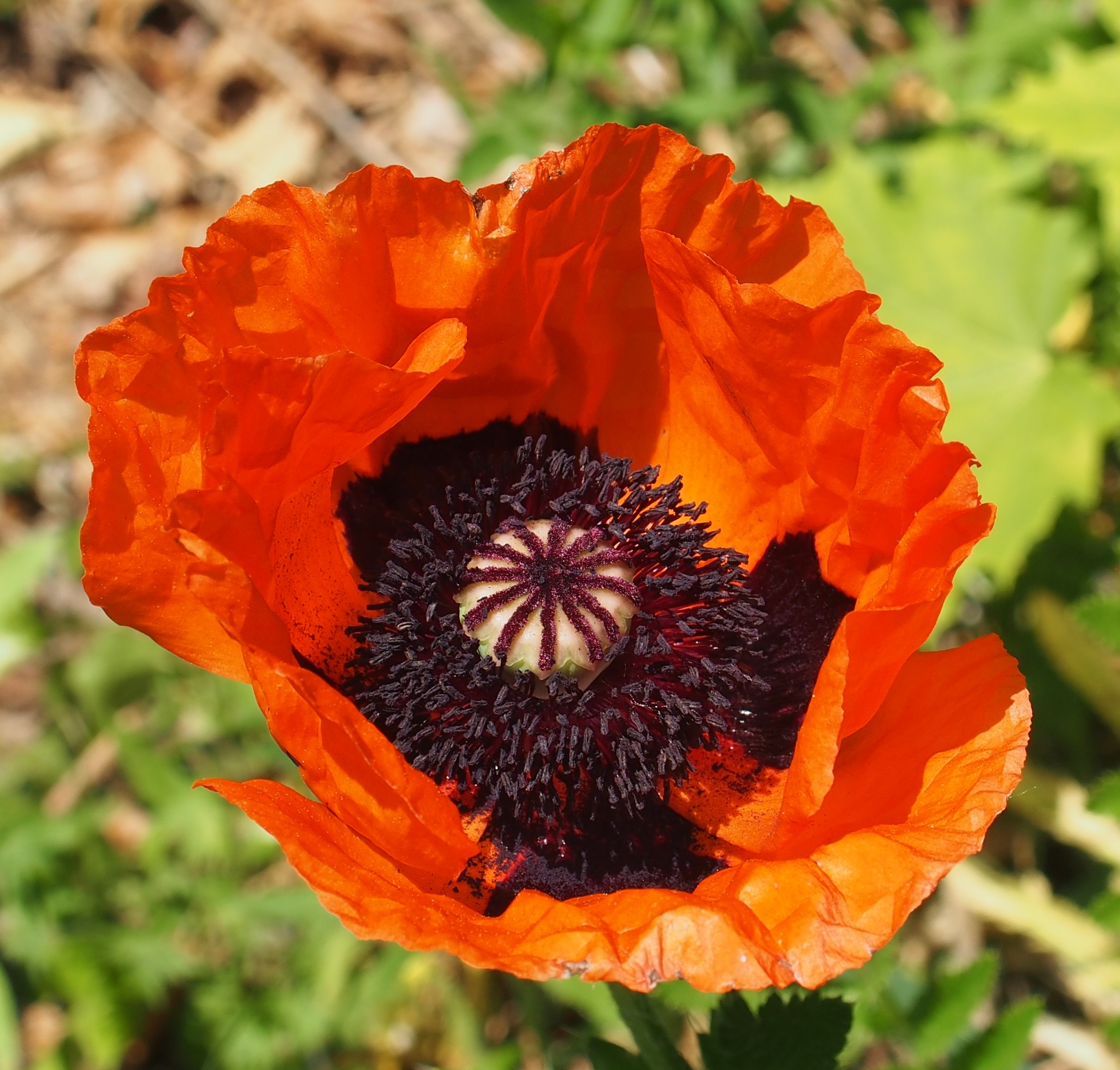
A little Bumblebee doesn't seem to mind that the Dame's Rocket is an invasive plant. The little Skipper likes it too. And a little Wasp likes the Raspberry flowers just fine.

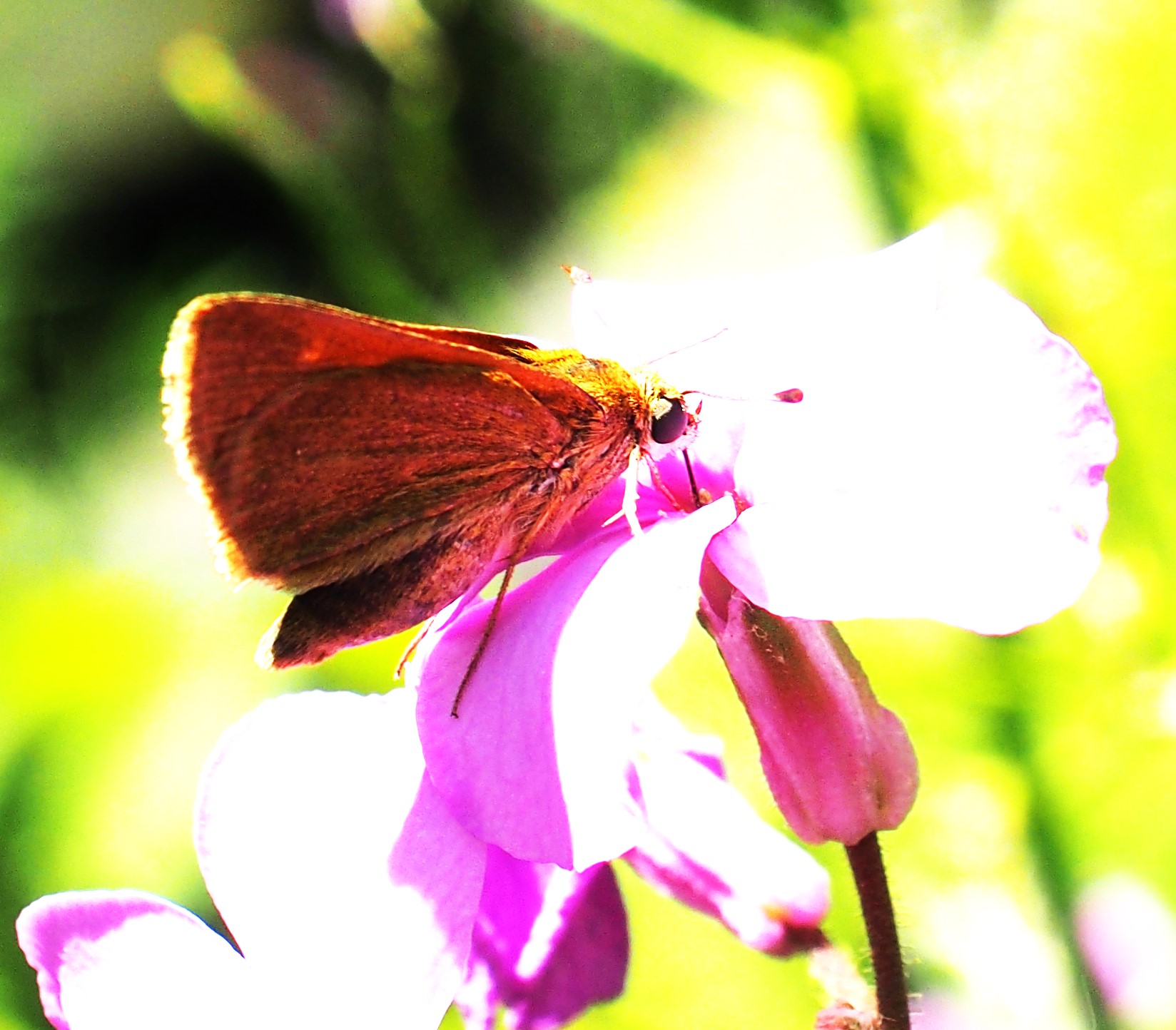

Most of the other Columbines have yet to bloom, but the Canadian one is blooming its best over by Deb's house. Next shows the starter in the front yard. There you can watch the Fern unfold slowly. Then our walk is over.
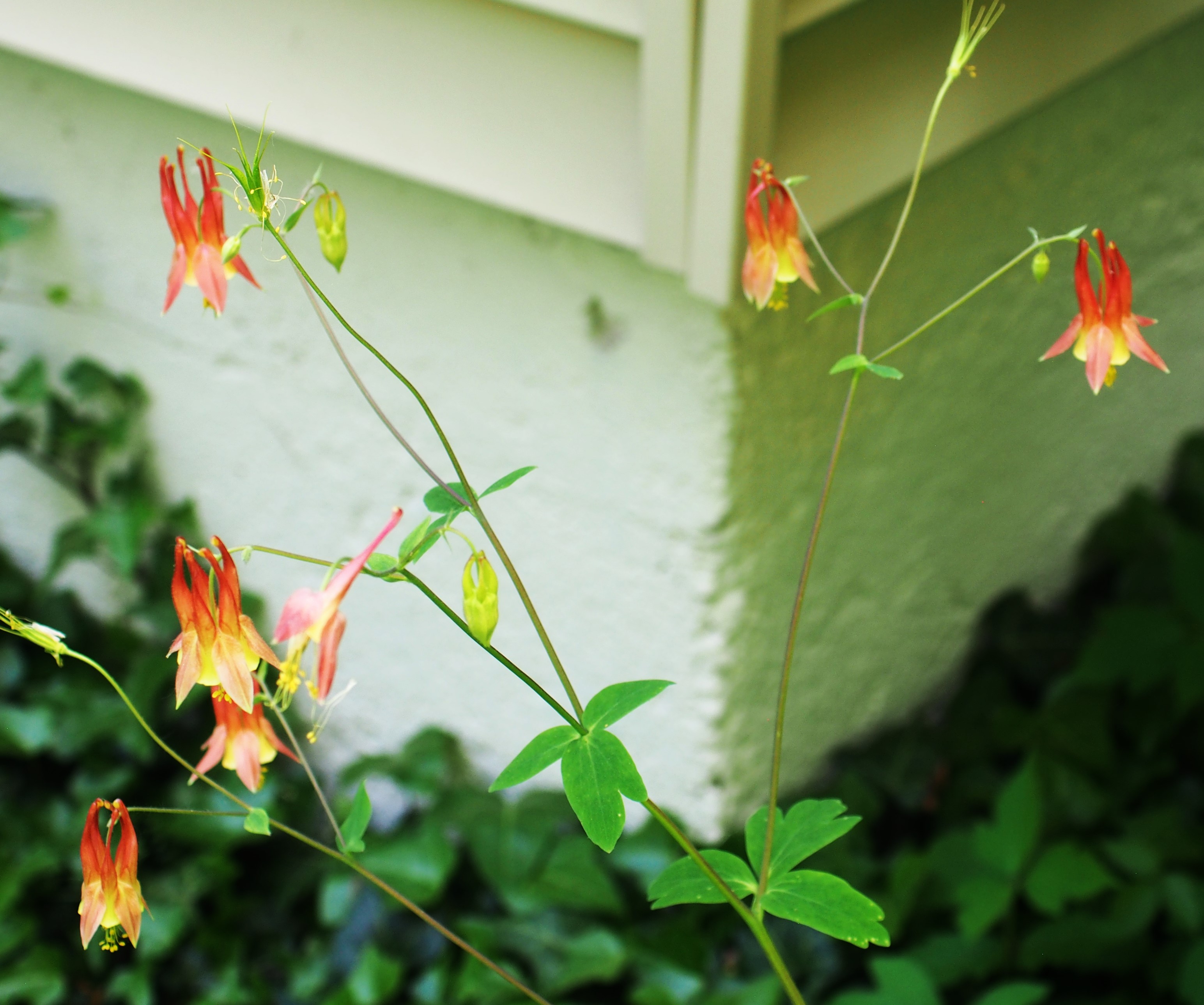
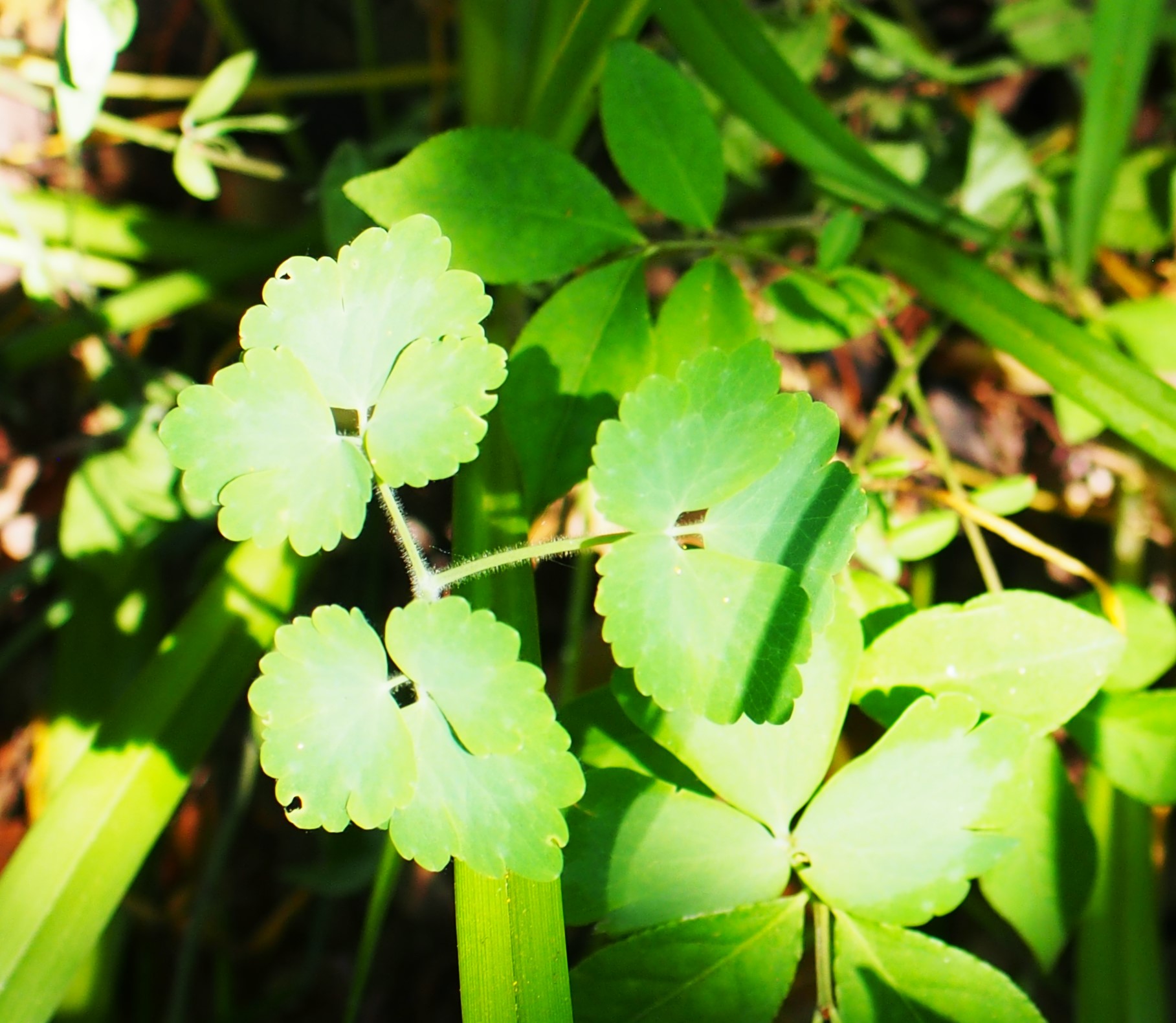
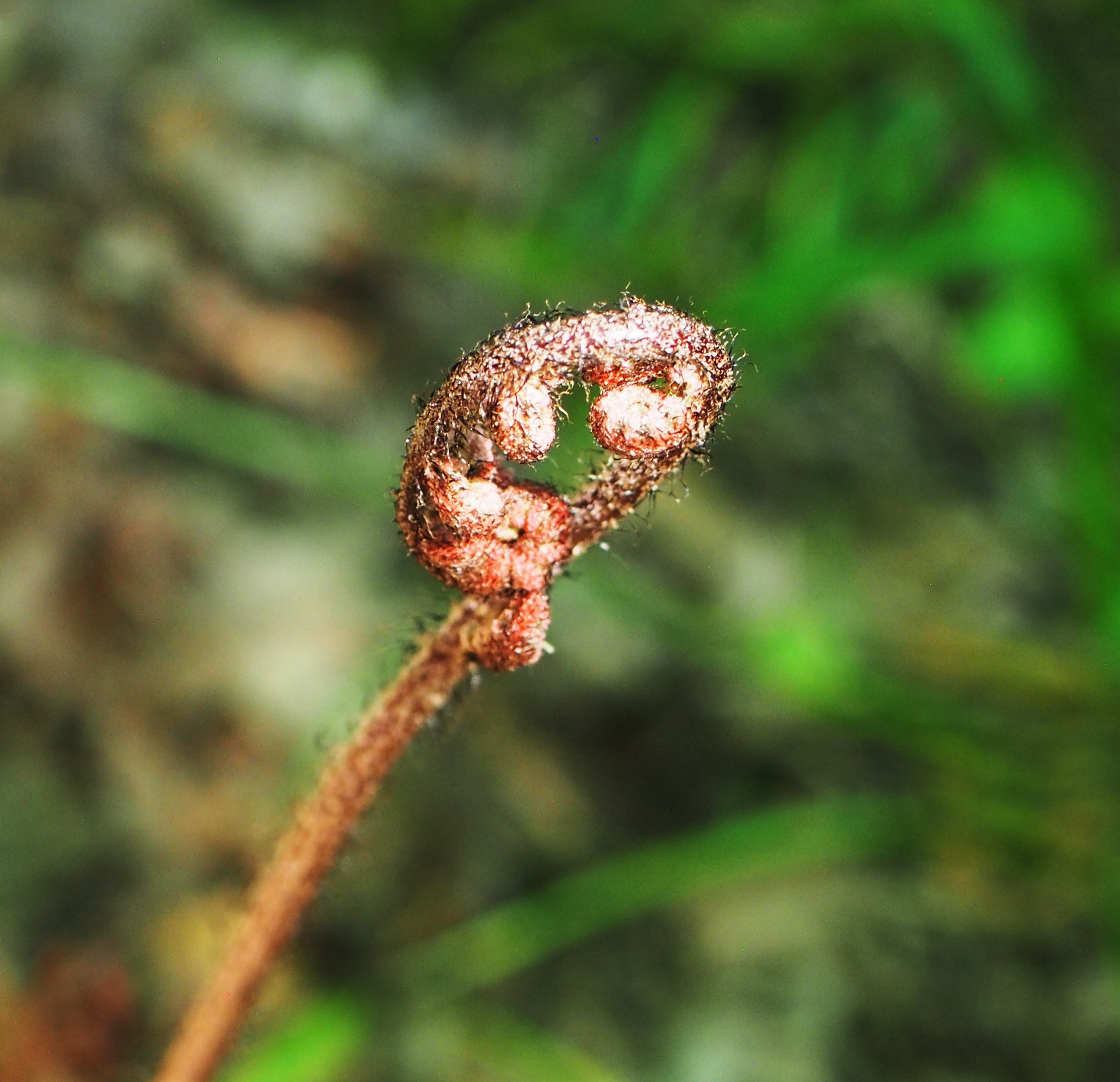
So it's now time to go see the Spiders. They somewhat make up in interest what they lack in quantity. Here's a colorful one on the Wall. Then one of many Cobweb Spiders. Last, remember the Cobweb Spider whose "neck" seemed to be a nice place for a Wasp Larva (one of the tribe Ephialtini) to live for a while. Well, the "while" turned into a few weeks or months and now see how much larger it is now (picture 2). Poor Cobwebber! In the last shot, another Spider has gotten hold of some good-looking Prey.
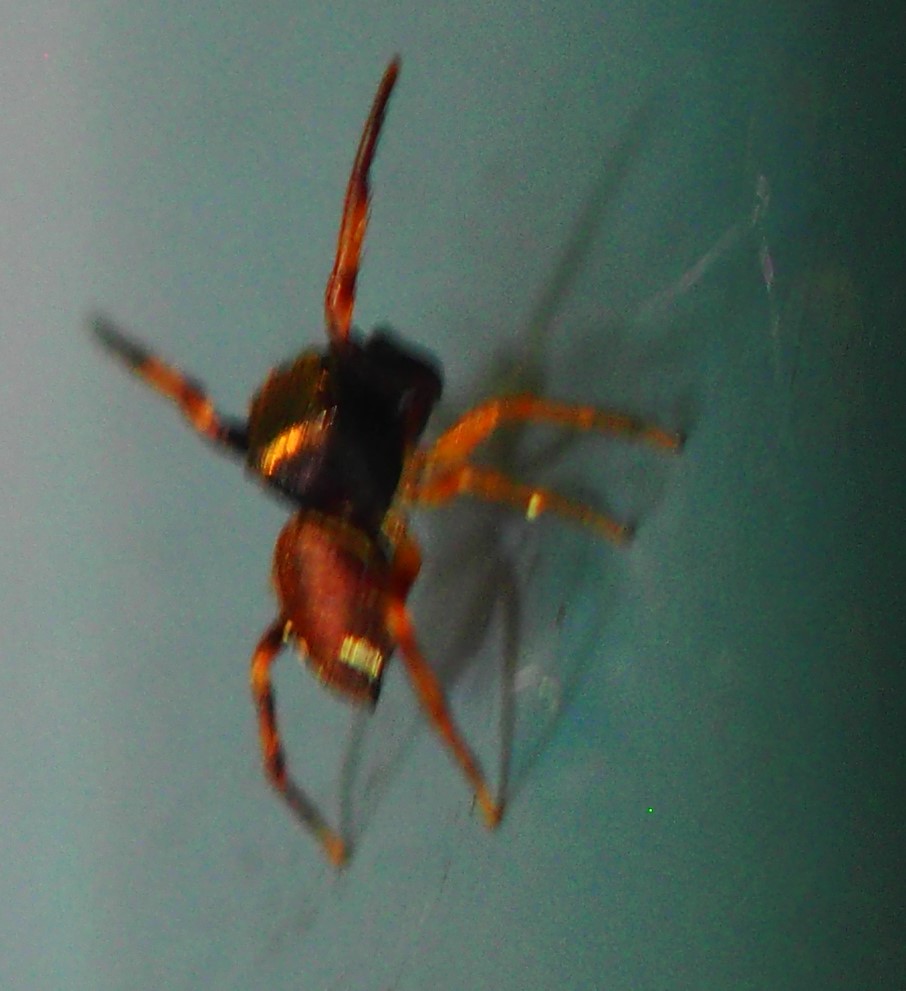
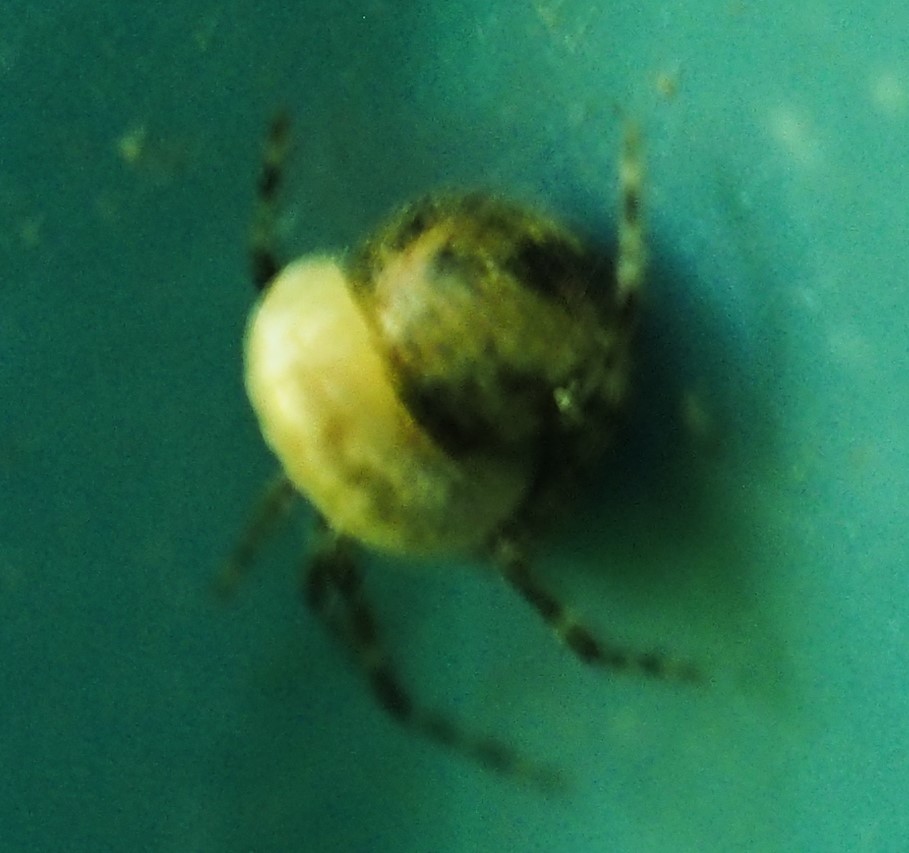
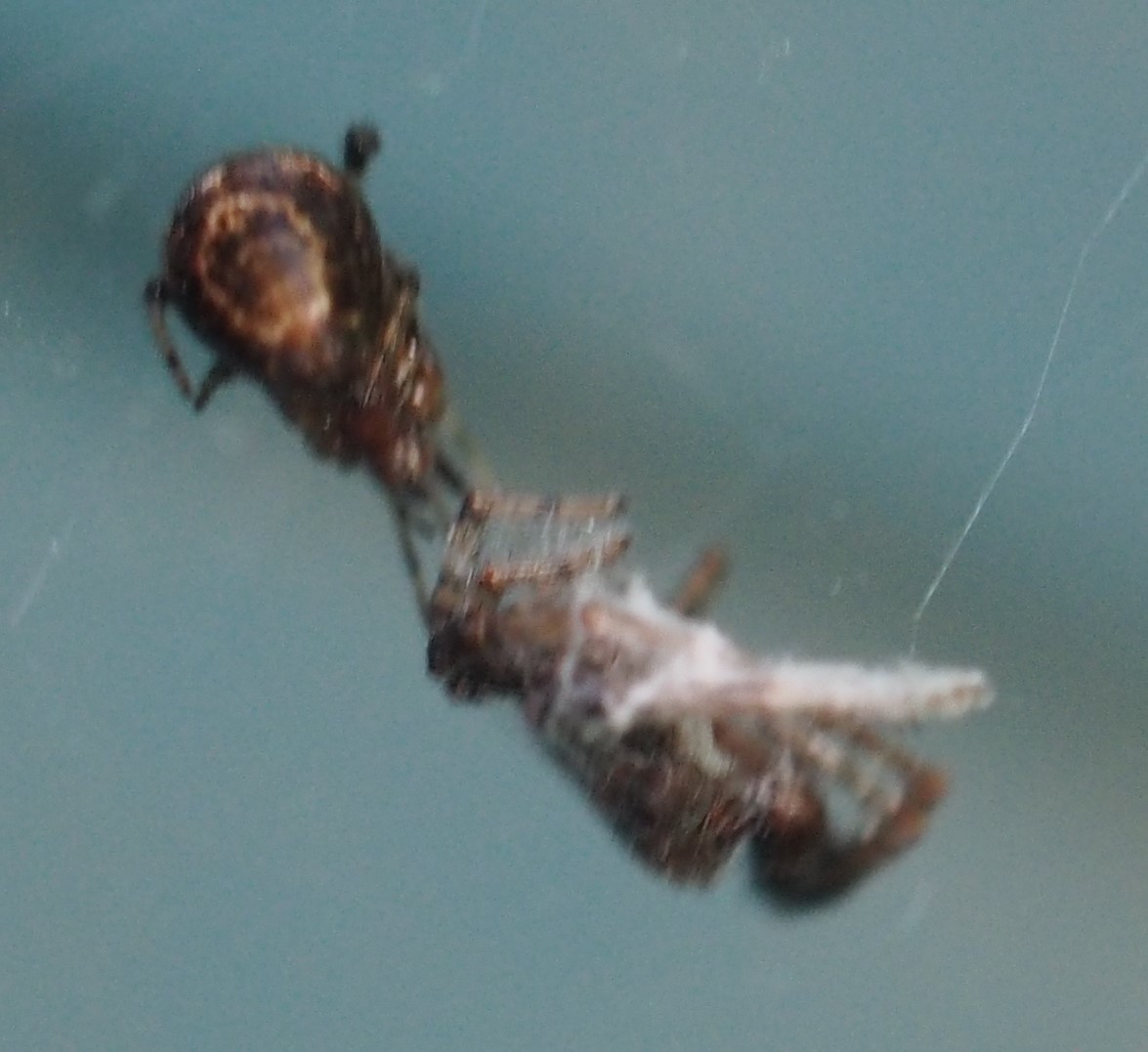
First we see a Crab Spider in the genus Bassaniana. This ID was given by my friend @tigerbb in iNat, who has been quite quiet lately. Welcome back, Tigress! She also knows her Spiders to the extent that she could tell that number 2 is actually a very young Grass Spider. We also saw this small newish one several times. It is also probably either a Dwarf Spider, meaning it will not get much larger, or a juvenile one of another kind.
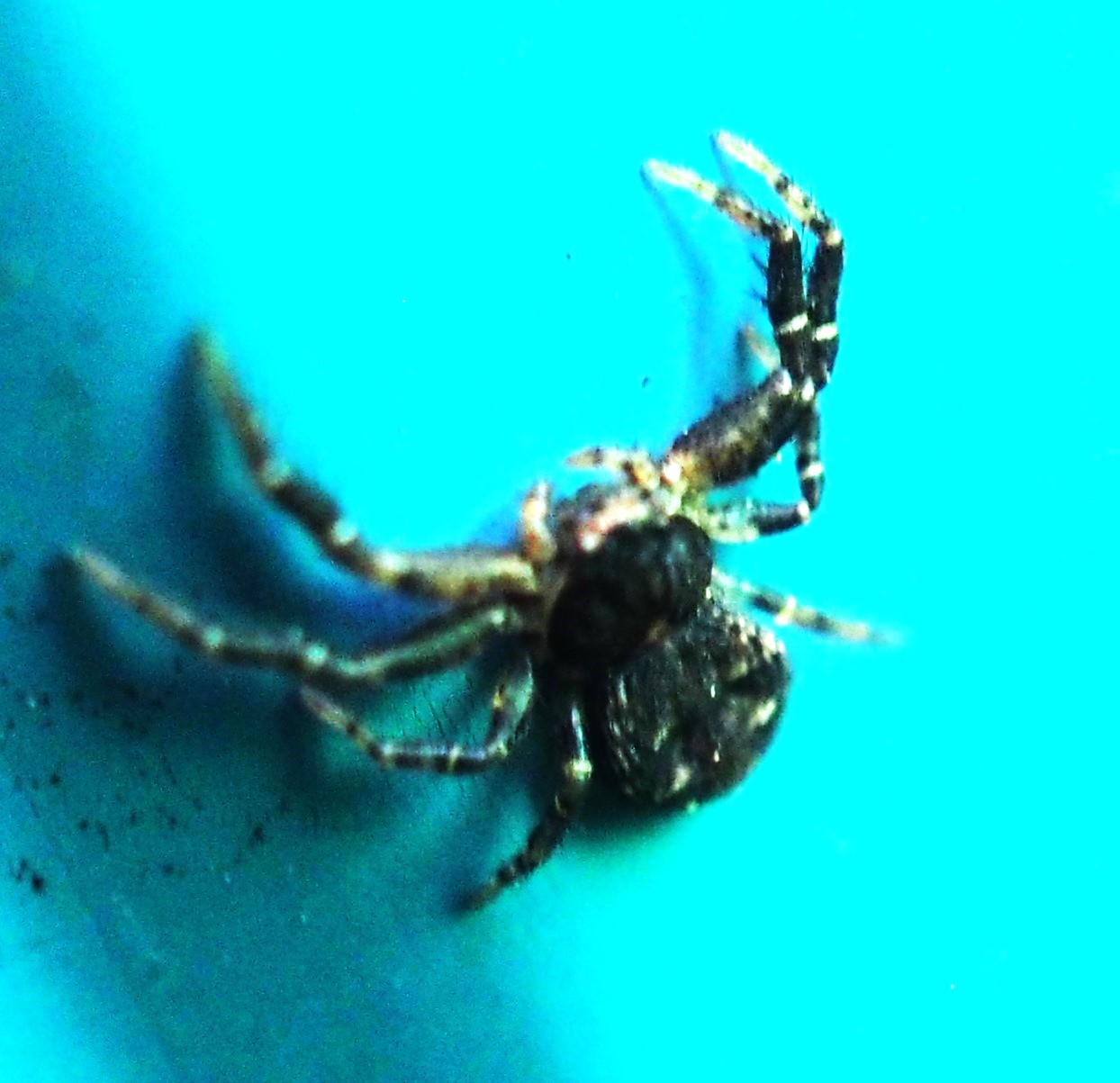
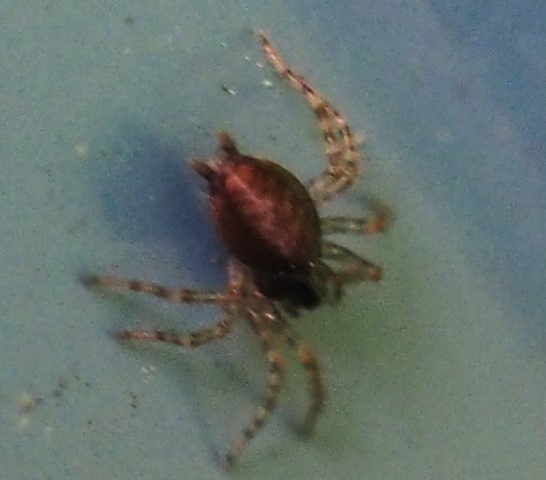
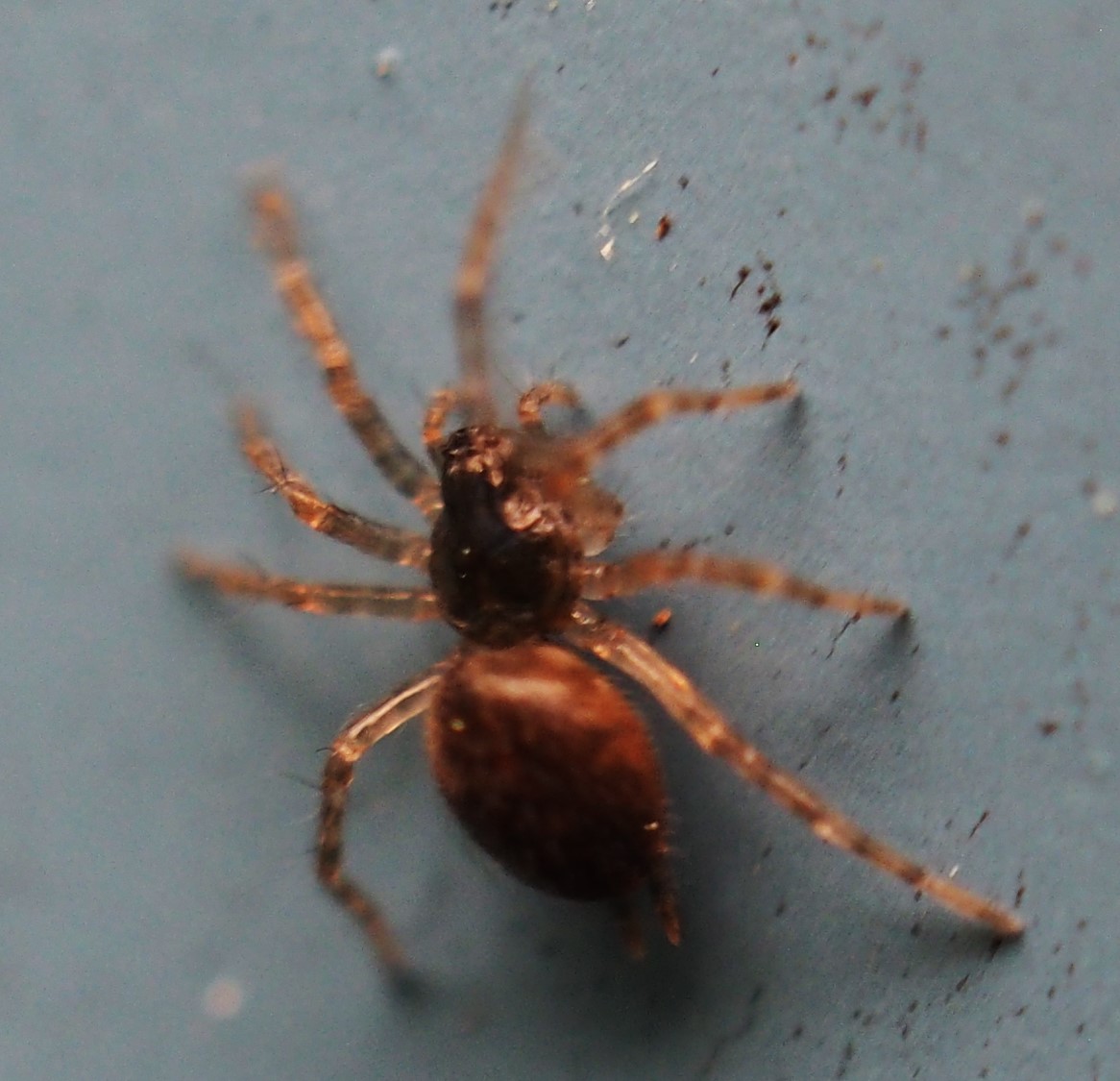
Finally, we see my very favorite of all Spiders, which is Mimetus puritanus, the Common Cannibal or Pirate Spider. I try to show it as often as I see it so as to have a stock of pictures at different ages and poses.
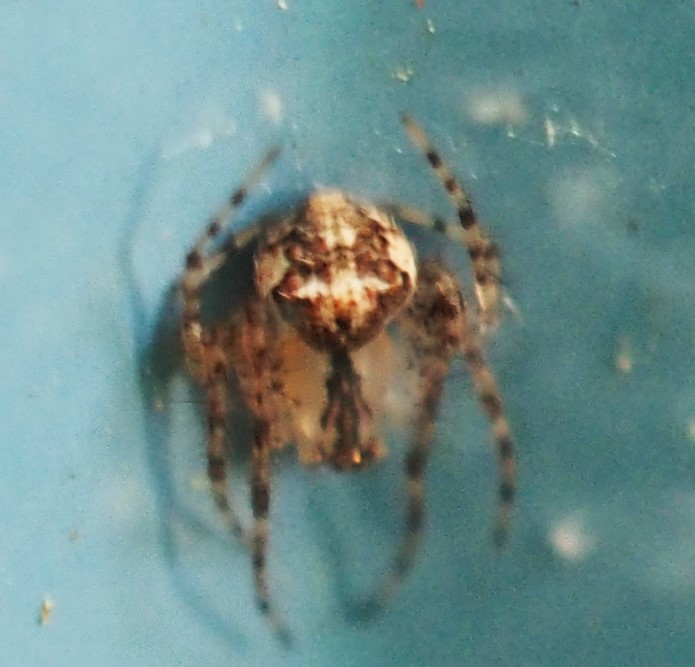
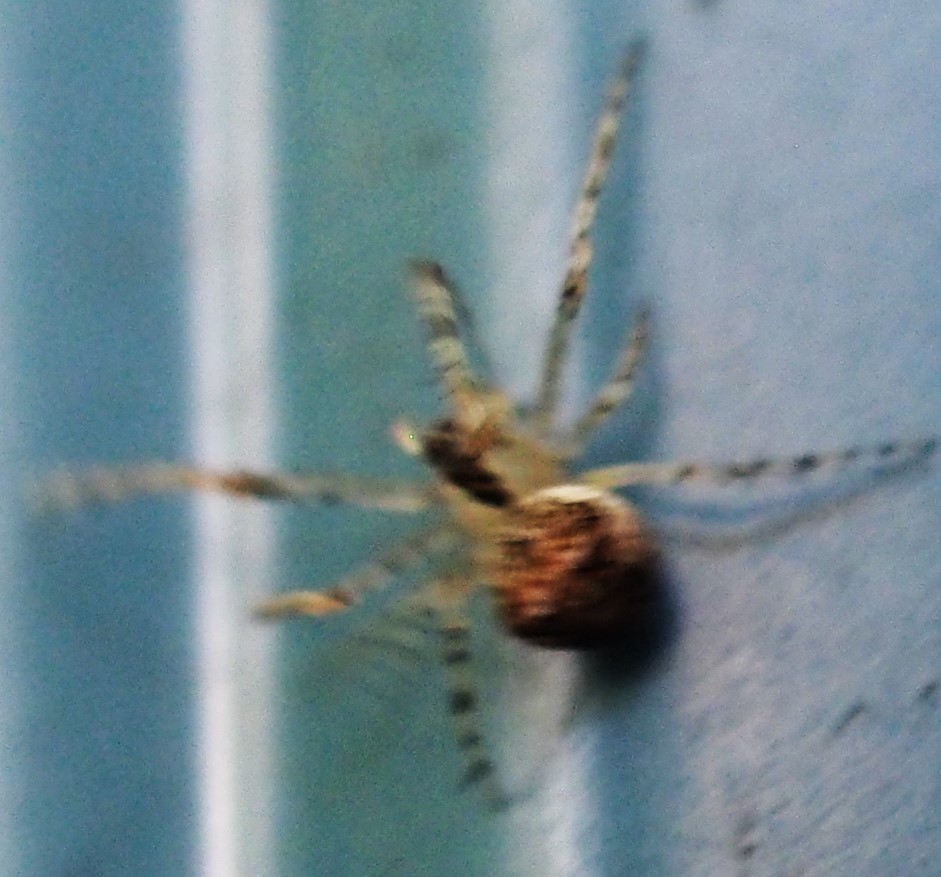
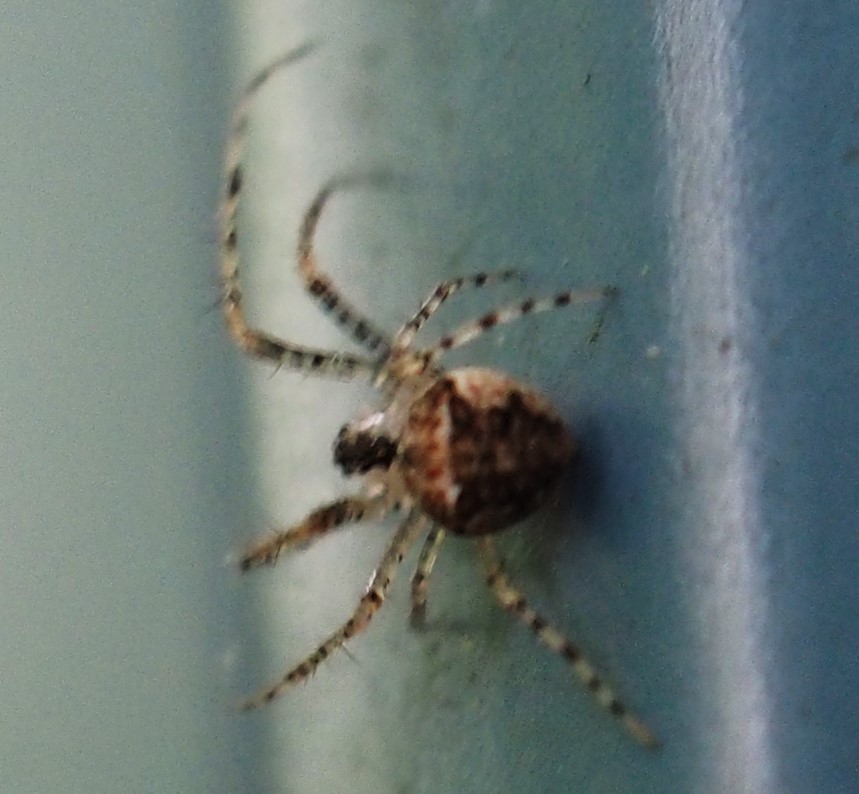
Here are some more neighborhood friends. First, an Eastern Grey Squirrel, in three poses at its very own platform.
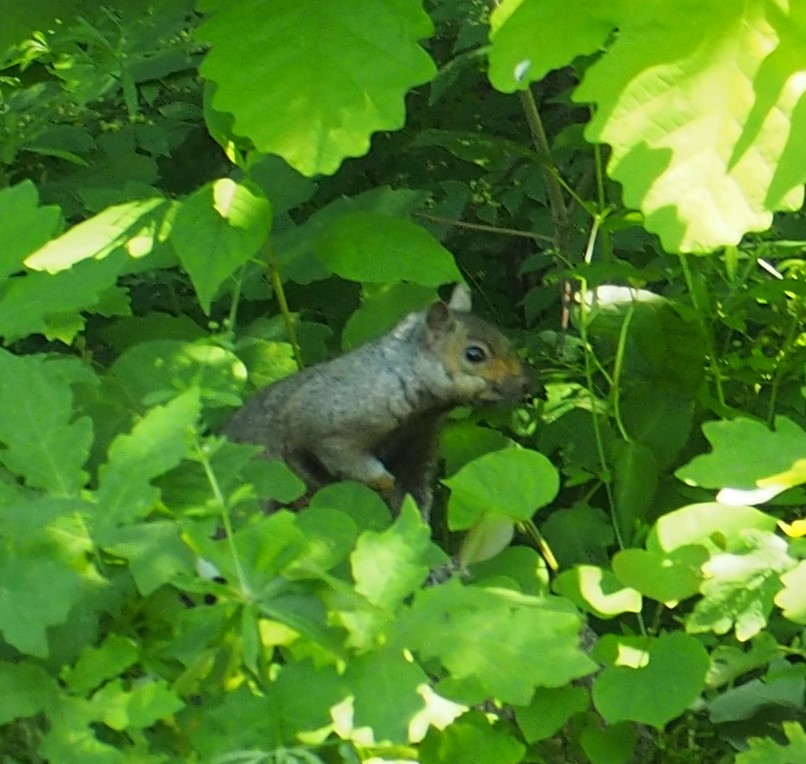

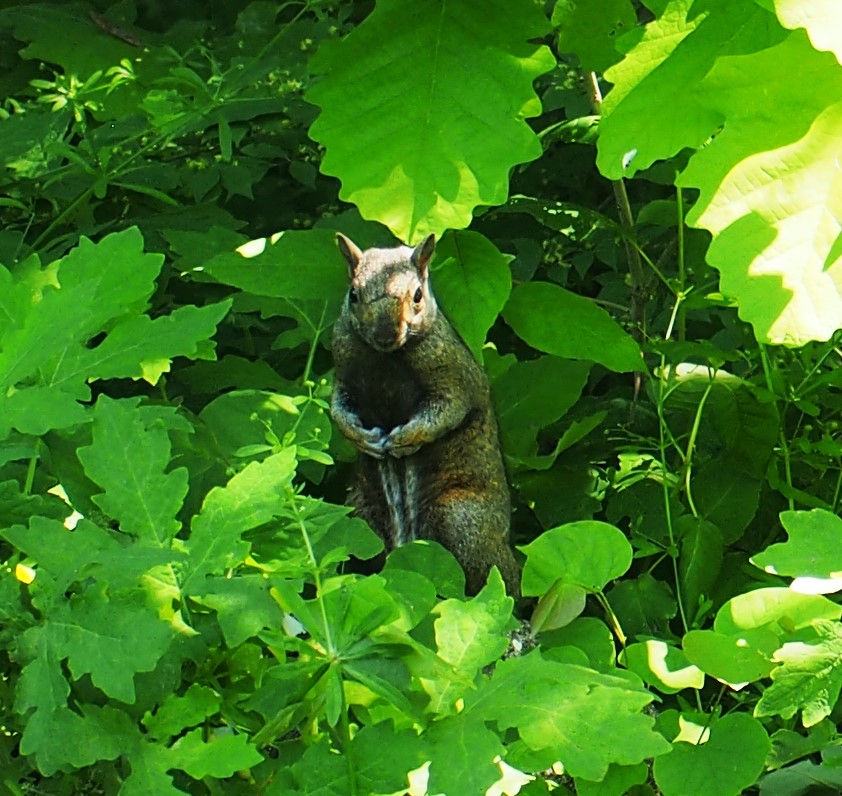
Here is some kind of Sparrow that came down to have a drink.
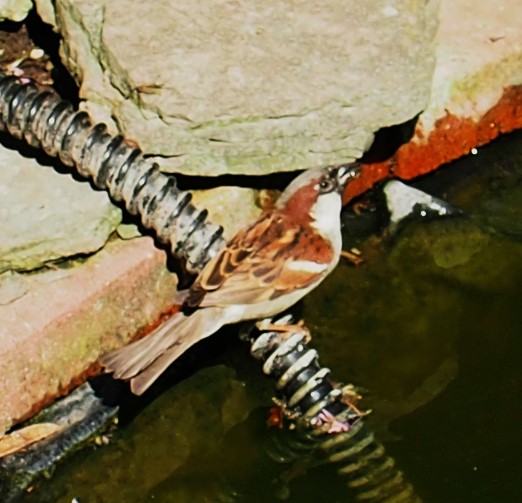
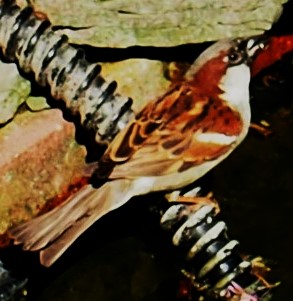
Now I know you are dying to know about the Amphibians. Here are two Frogs; our old pal the Frog with the droopy tongue, which now seems less inflamed and not to be giving him any trouble; two tiny Frogs on one big Lily pad.

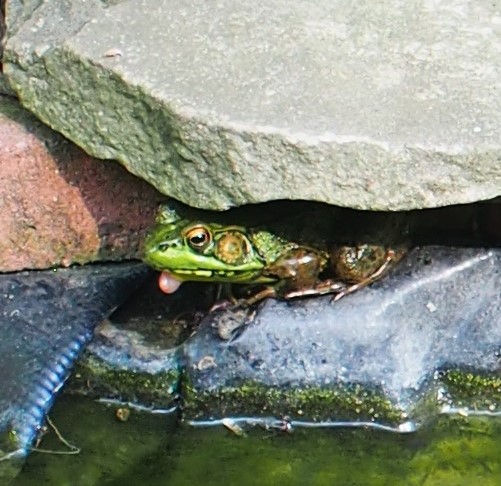
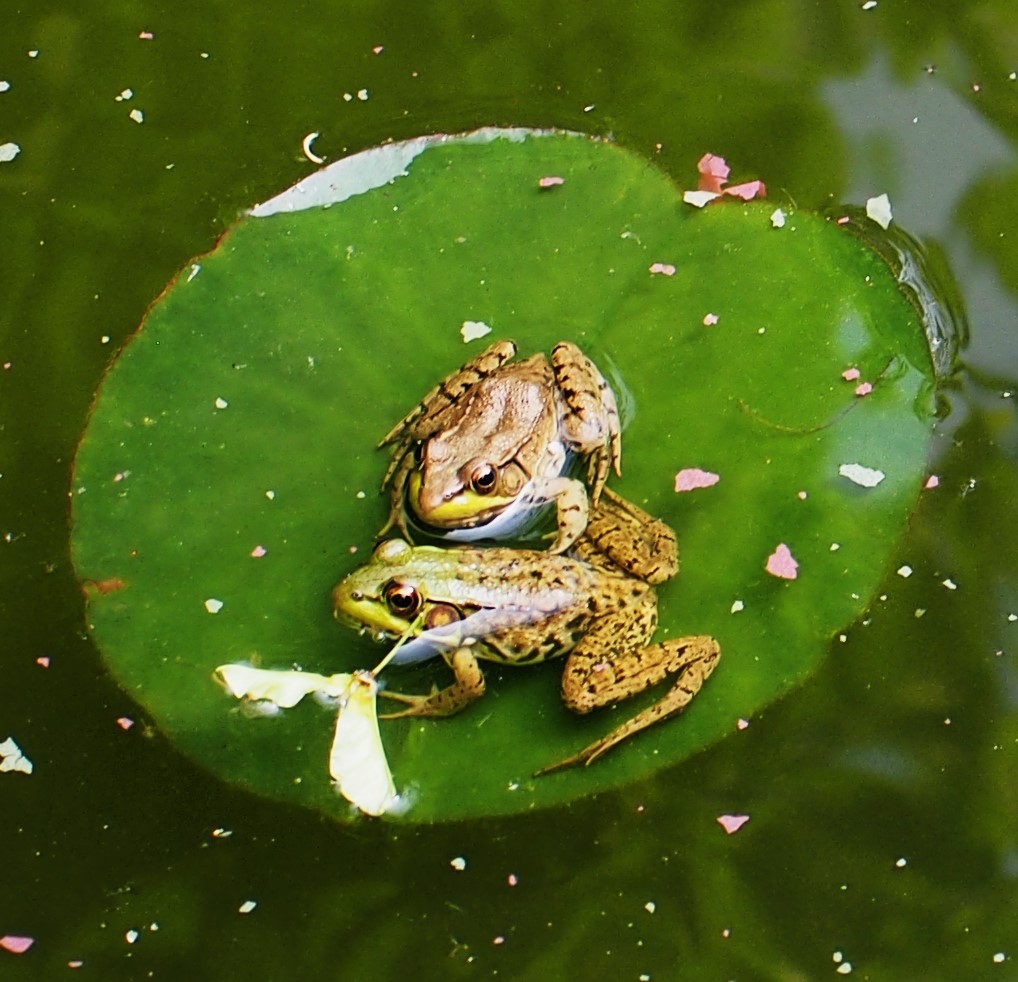
Meanwhile, the Toad that came to wait for his own true love is still here along with a few other male Toads. You may hear some sporadic trilling as they sing of Love and Marriage, but a week later no decent Toad women have applied for the job. Picture 1 shows two Frogs and one Toad, apparently with no ill will amongst them. Next you see one of the first Toads to arrive. And third shows one Toad trying out another only to learn that not all Toads are suitable females!
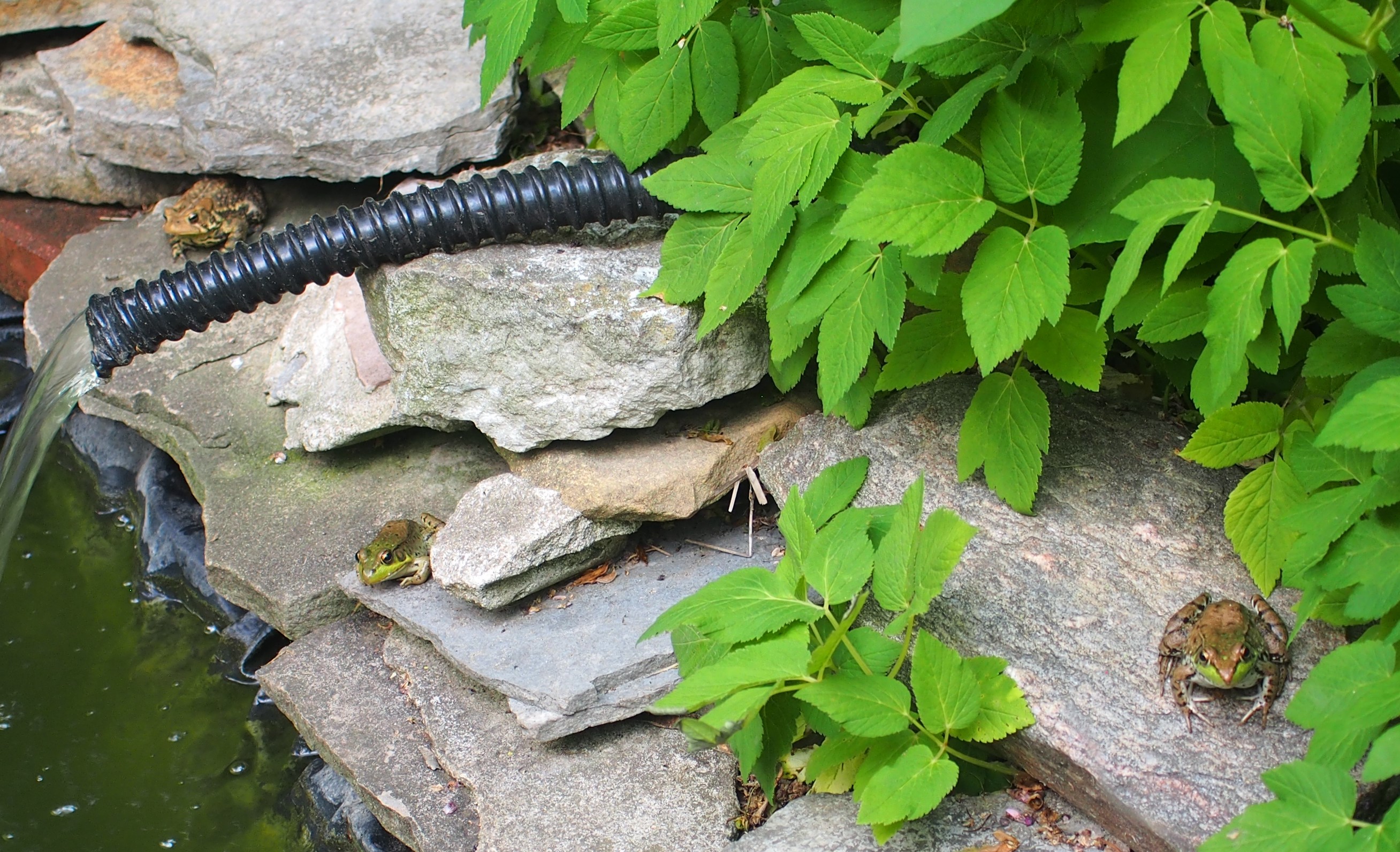
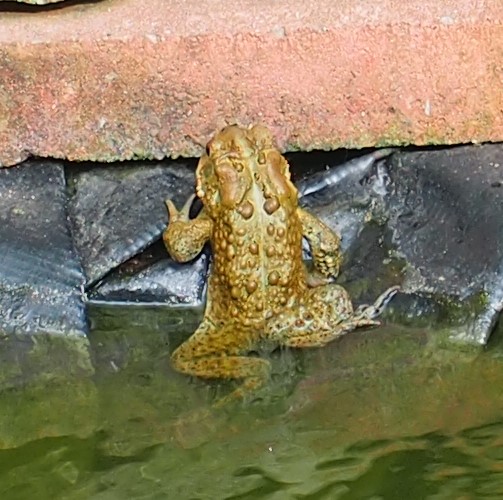
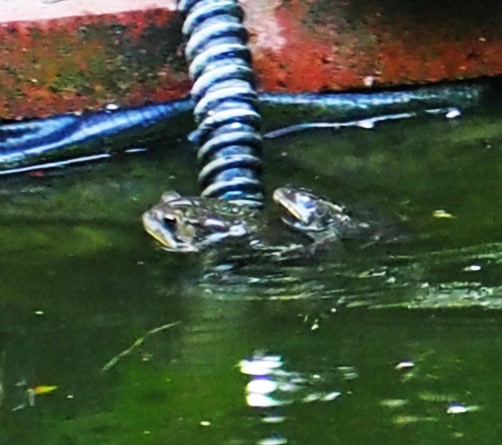
Now the story used to go that a Lady would go shopping for a nice new hat to raise her spirits. For some reason I felt like going shopping and ended up at the Pet Station in Jackson to try to find a few new Fishes to spice up the gene pool that is our Pond. In picture 1, you can easily make out the only YELLOW fish I've ever had - it's a baby Koi and seems to have fit right in with all the other rascals in the Pond. The bright red fish with the black dots is seen again in picture 2, where you can also see its tripartite tail (called a fantail by the experts). I got this one because I can never have enough brilliant colors in my life and also because the Mother Fish (Seymour) which I had the original pond dug for was also a Fantail, though her colors were quite different. In that same picture, you can see that the Lily Bud seems to be opening up a little. The last picture shows a little Frog possibly greeting the new Koi, so far nameless.

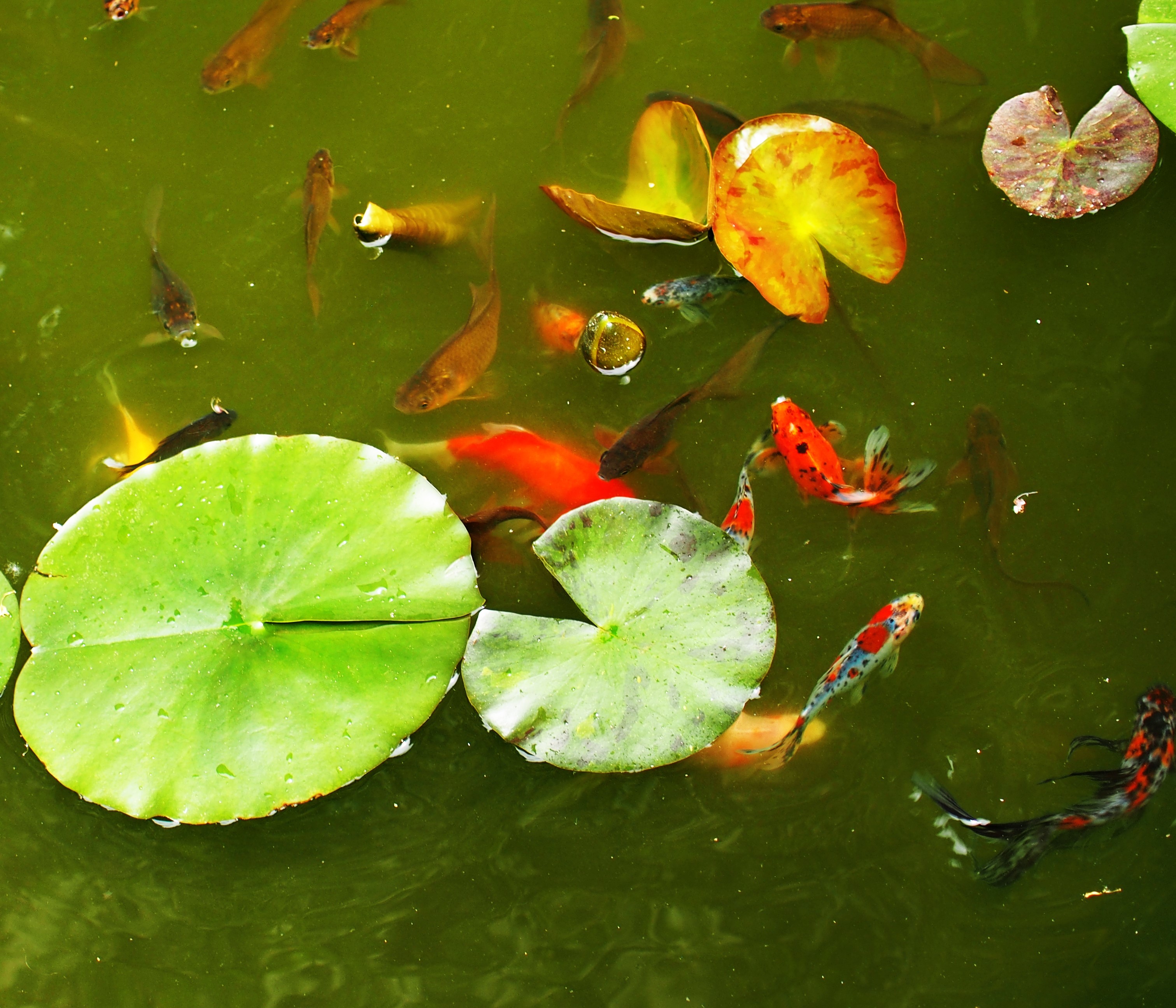
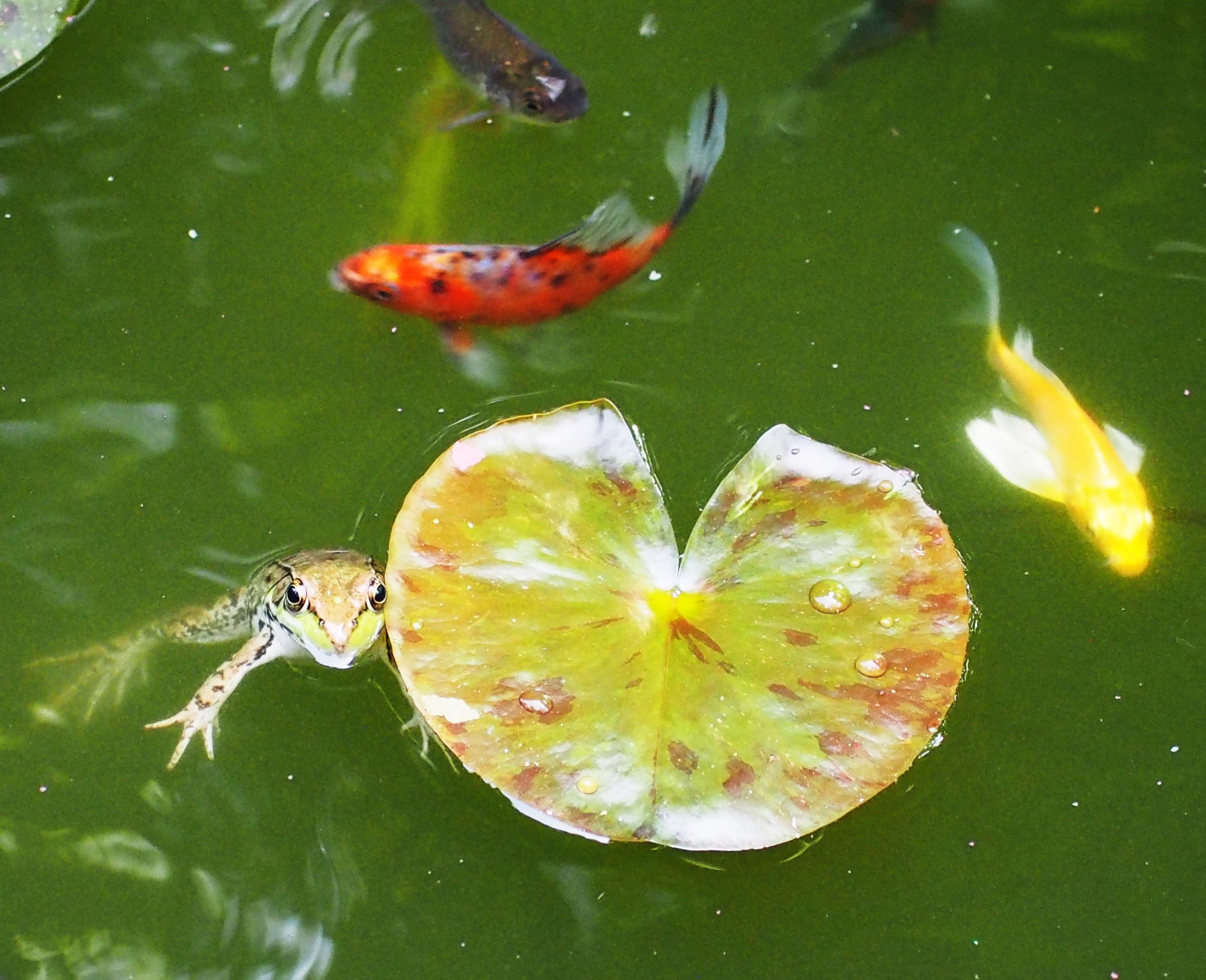
So now it is June and we've already had several days which I felt were too hot (remember that last year was an outlier in the sense that the high temperatures never really rose much above 80 F). But it rained a bit last night and so today seems cooler already and I must go out and revel in it. Come on over if you would like to share the view with me. And best to everyone!
Love, Martha
Back to May 28, 2023
Forward to June 11, 2023
Back to main menu
copyright Martha O'Kennon 2023






















.jpg)
























.jpg)

















































